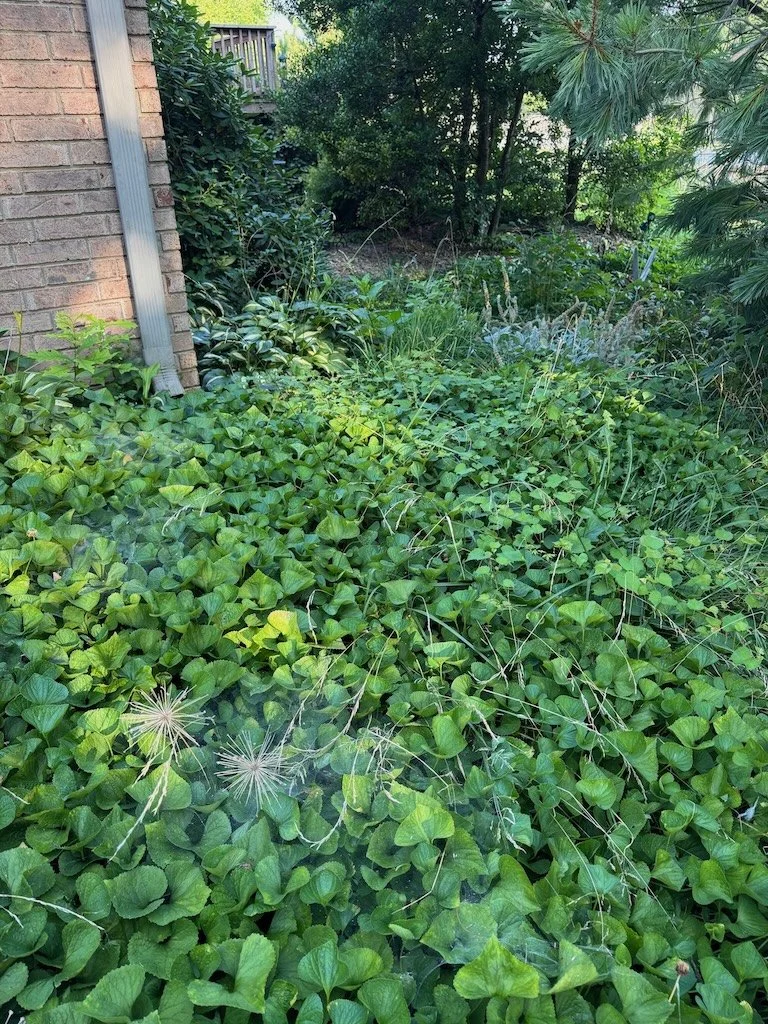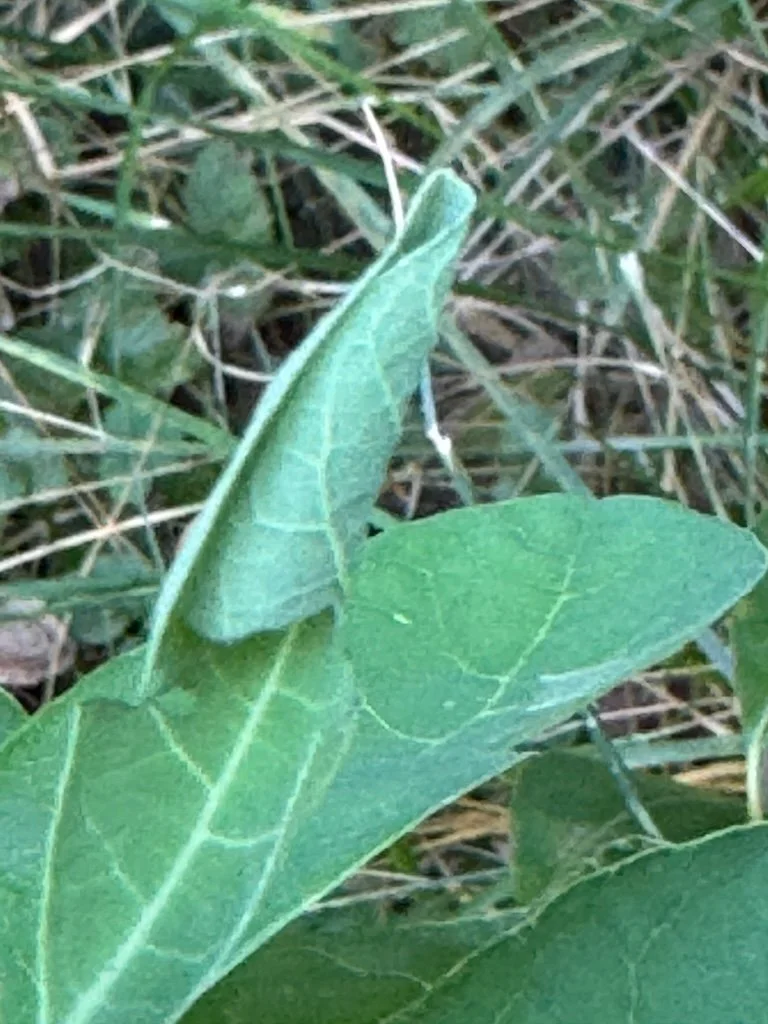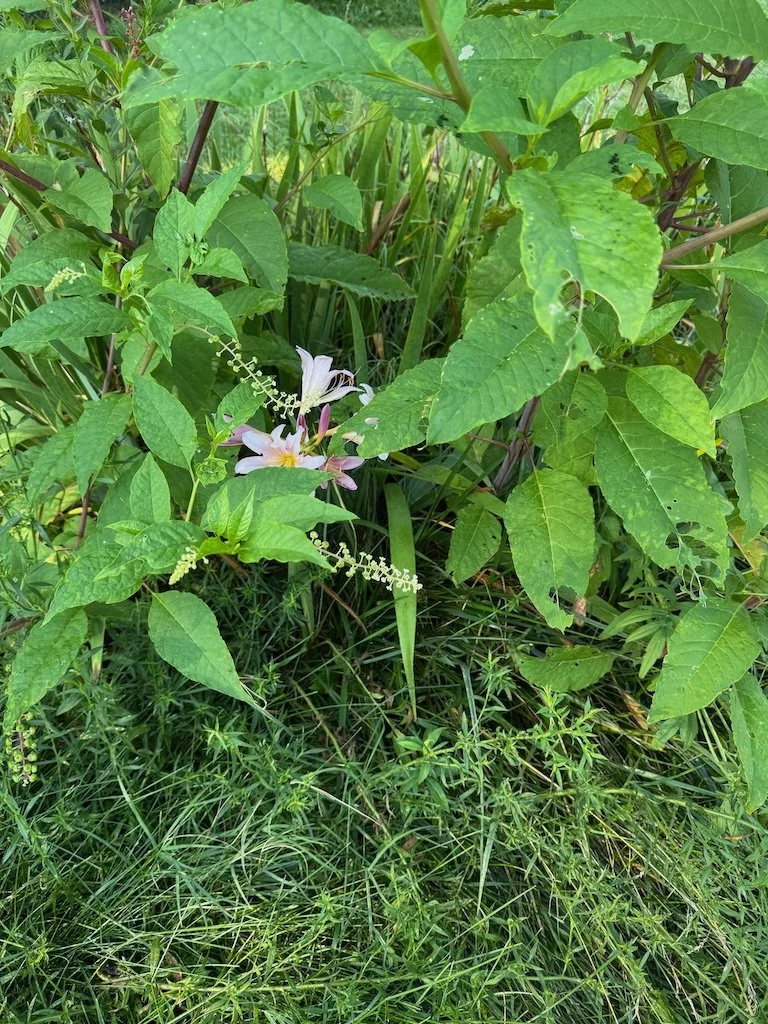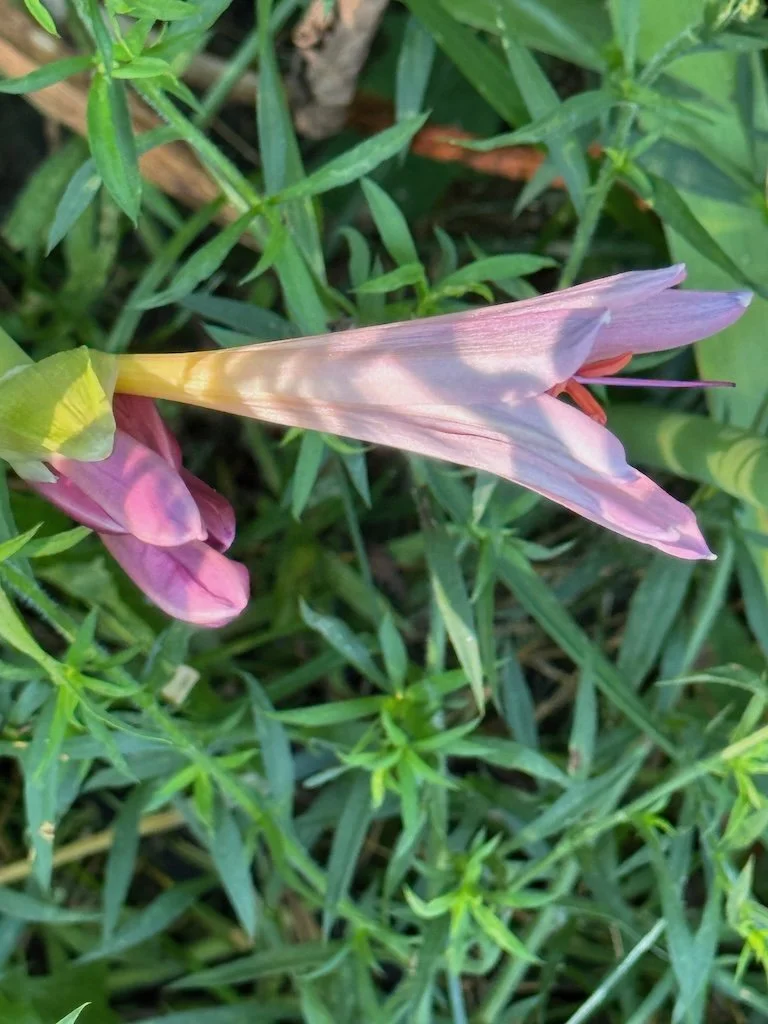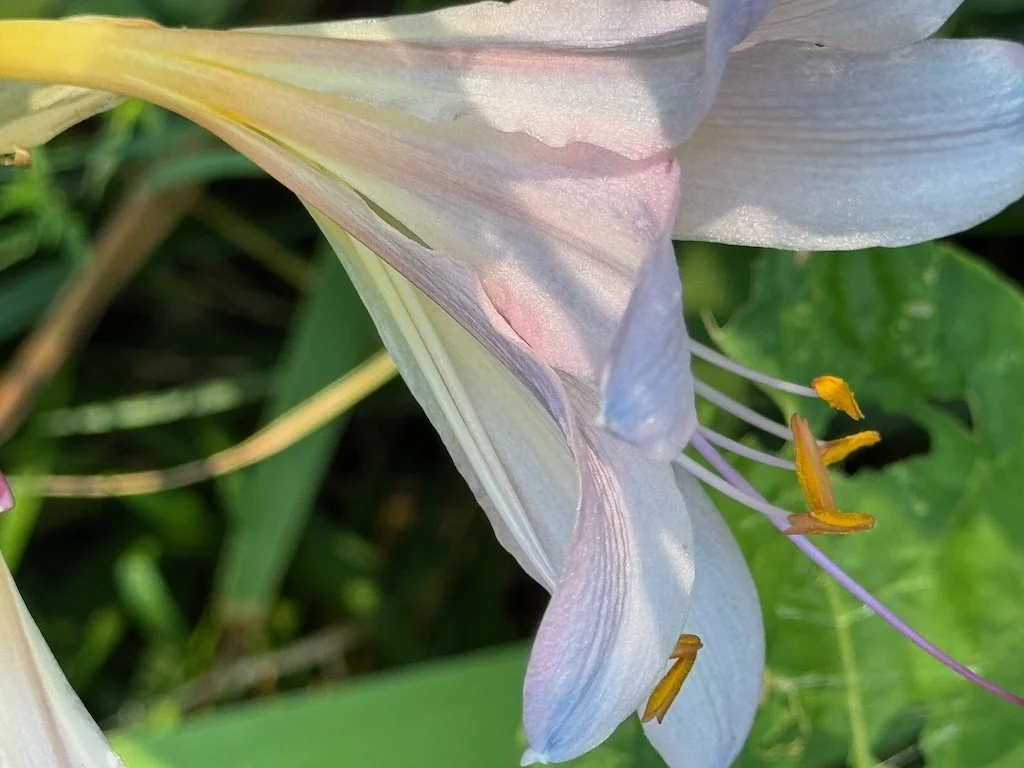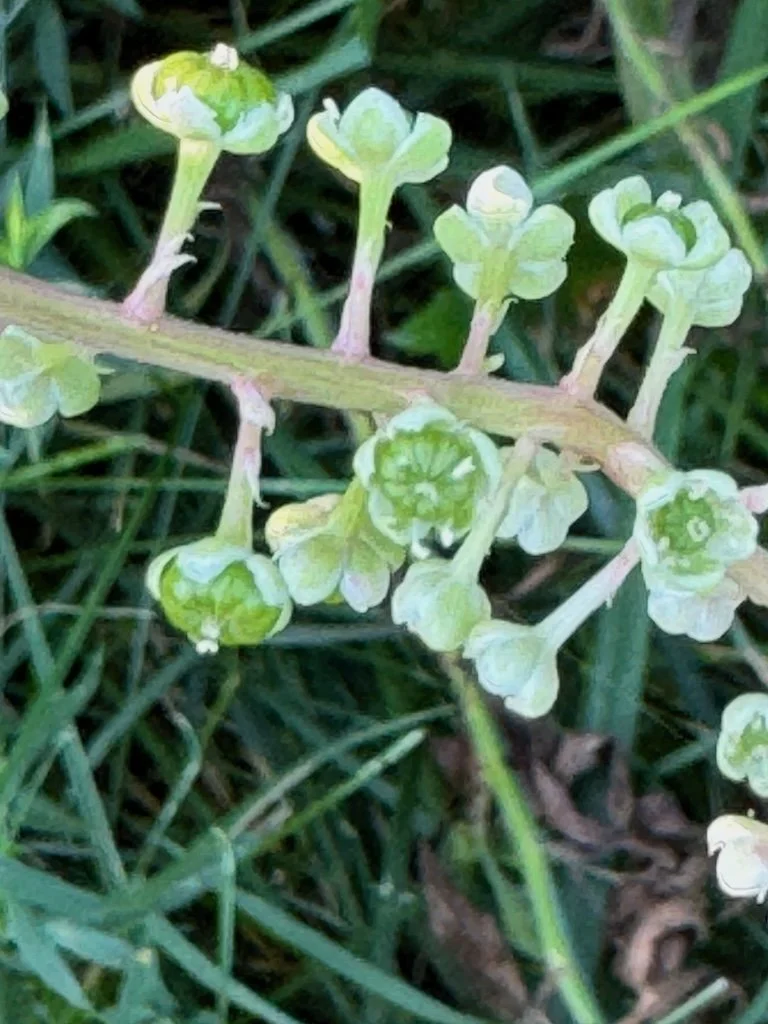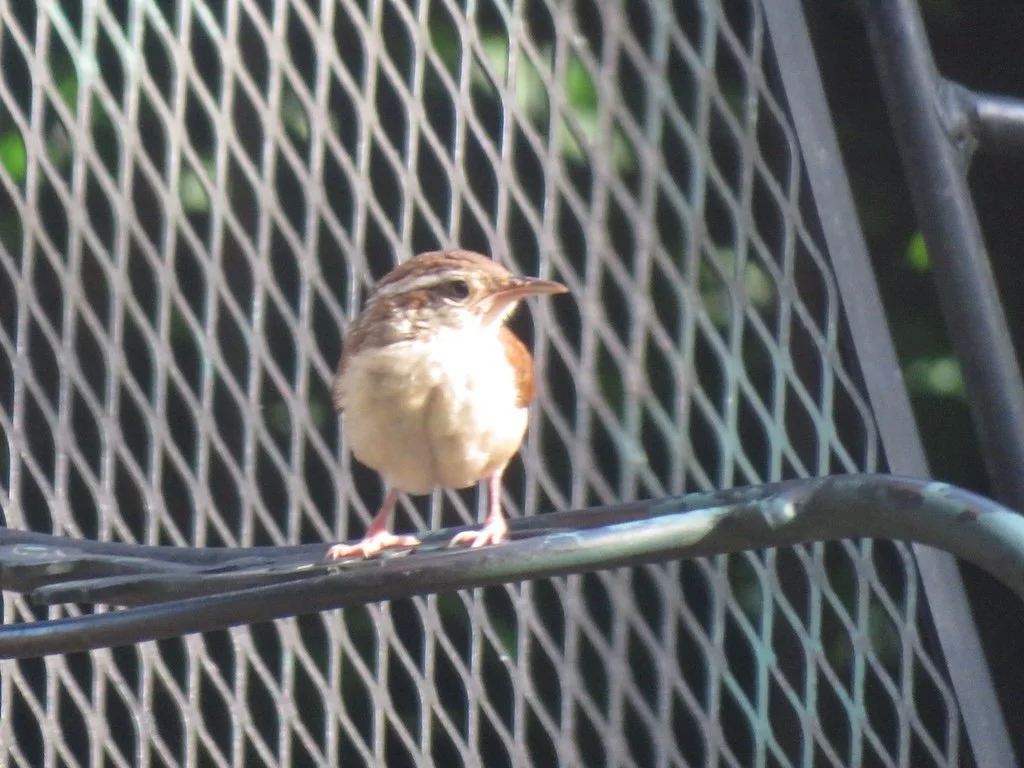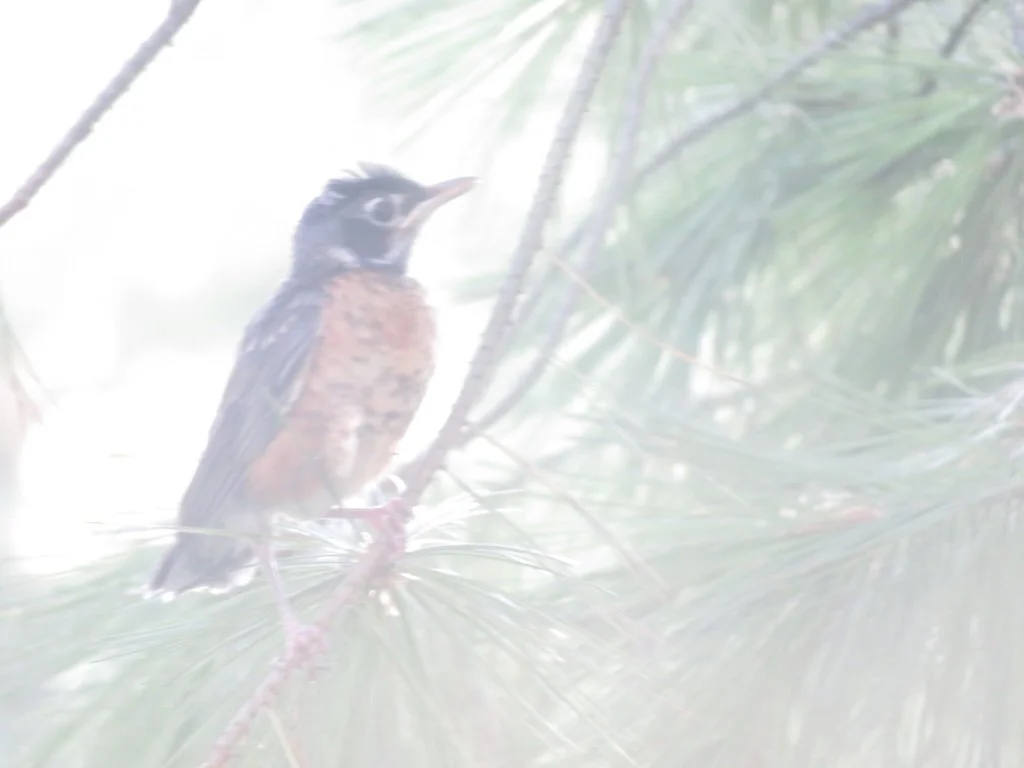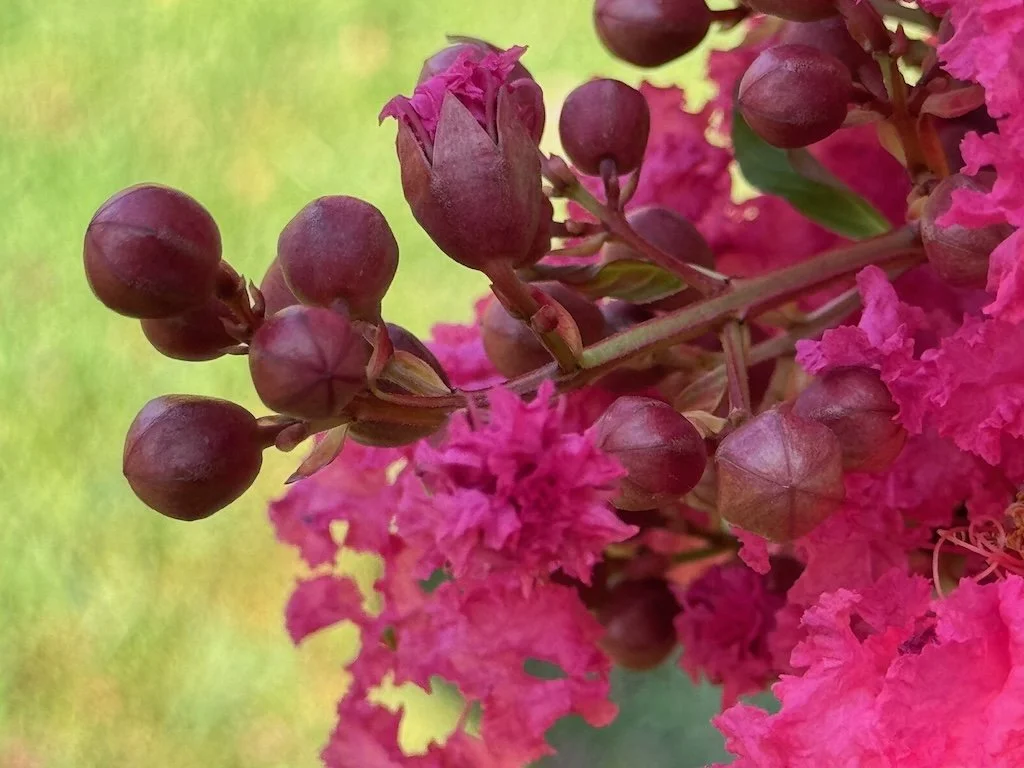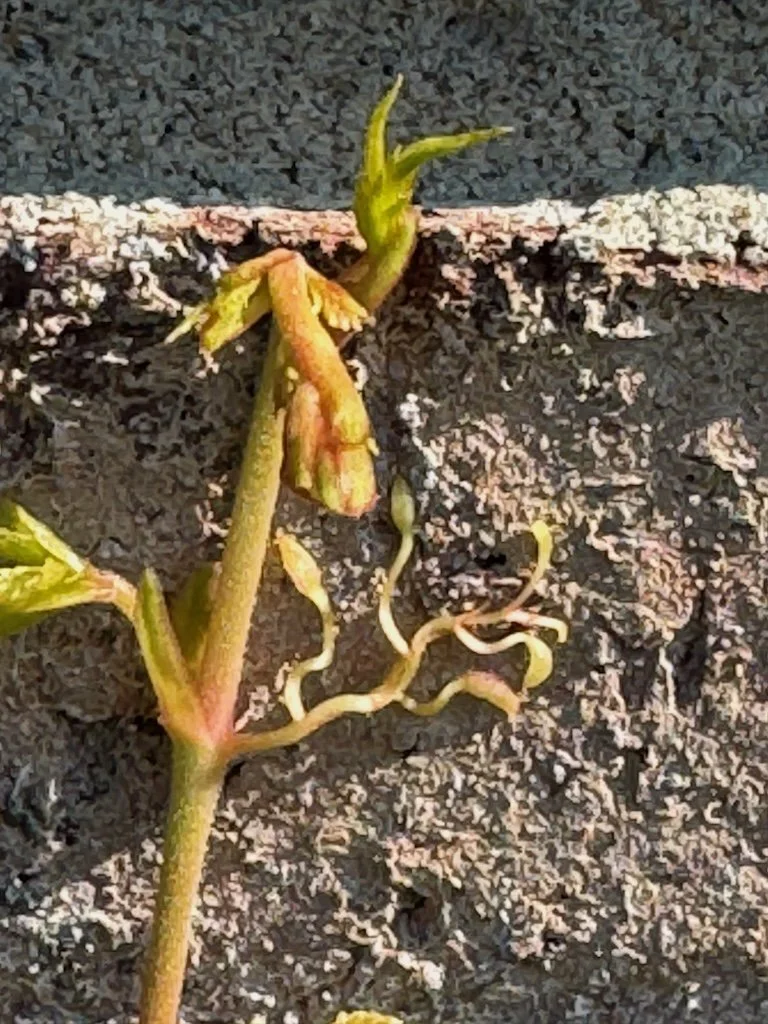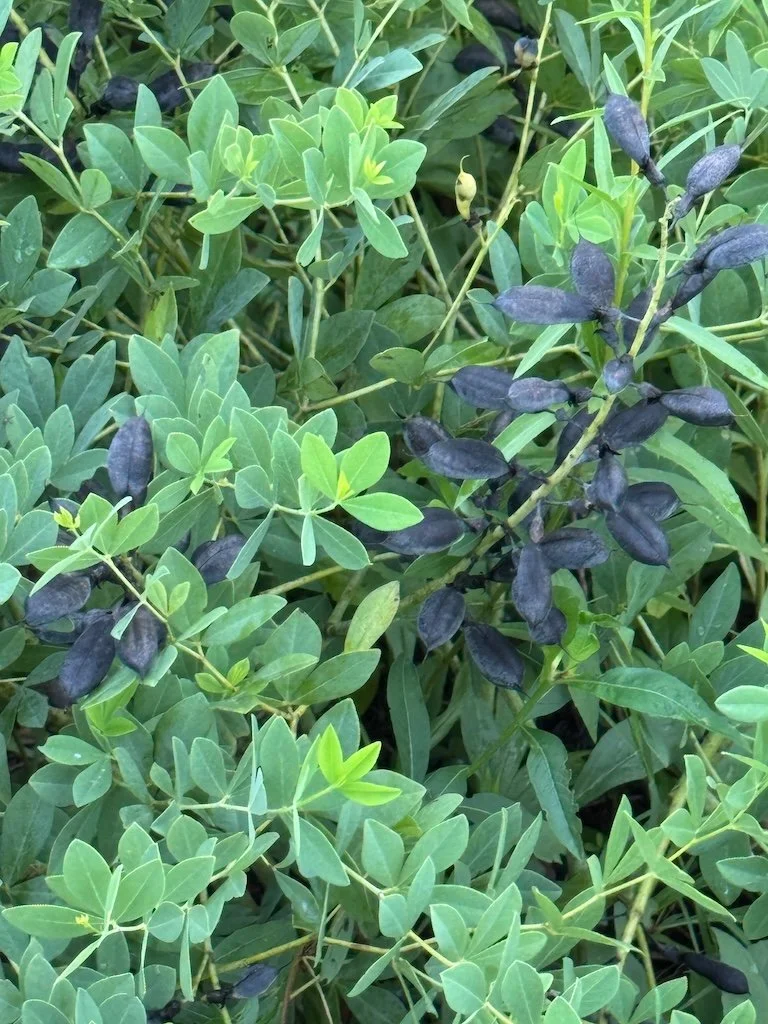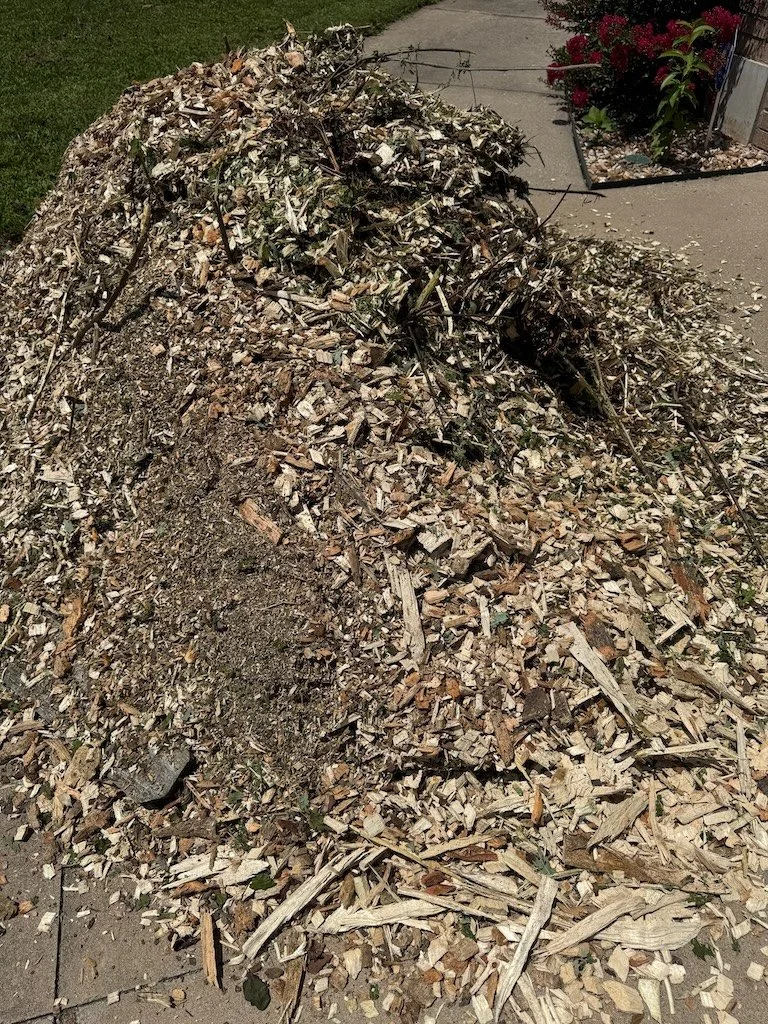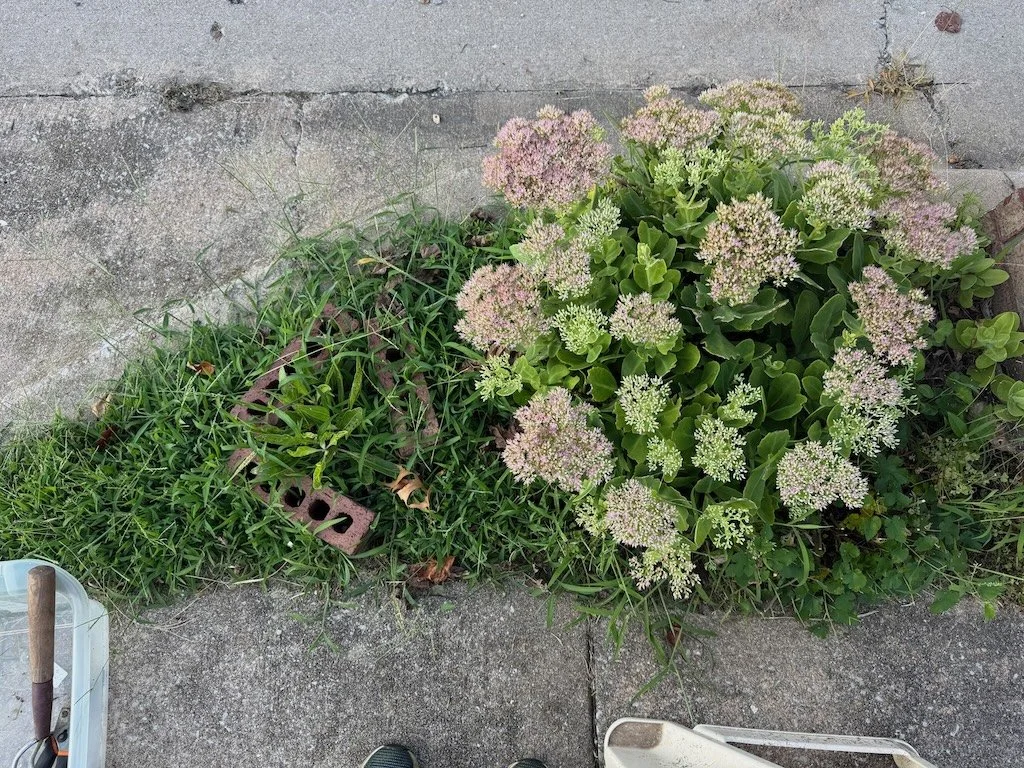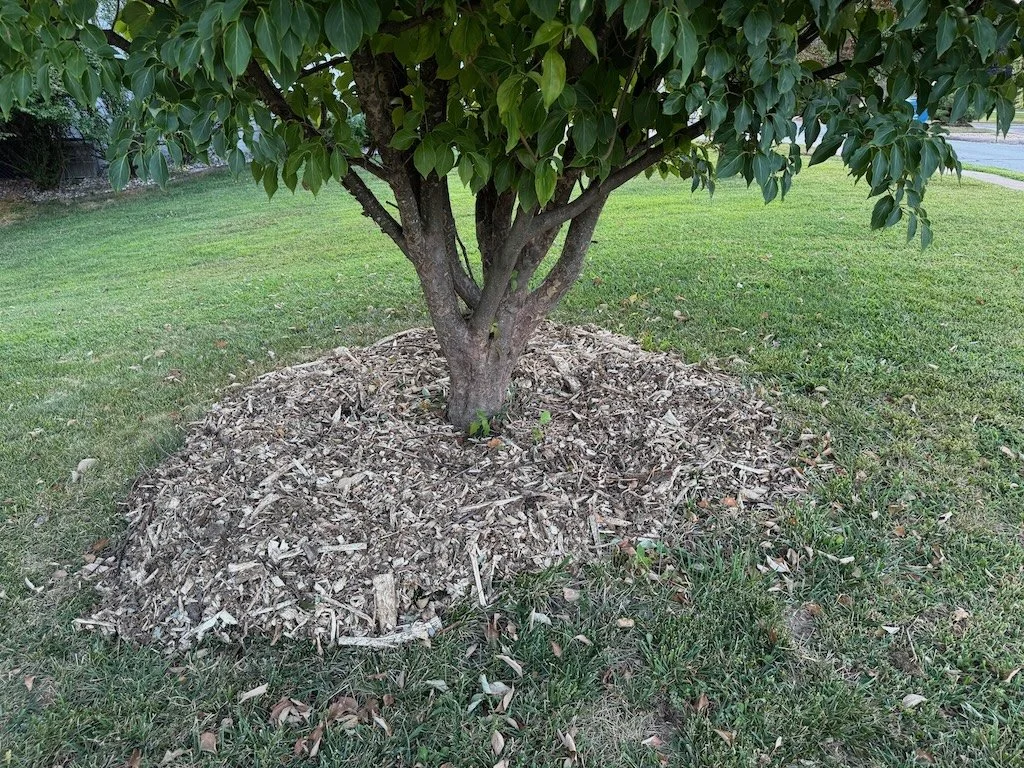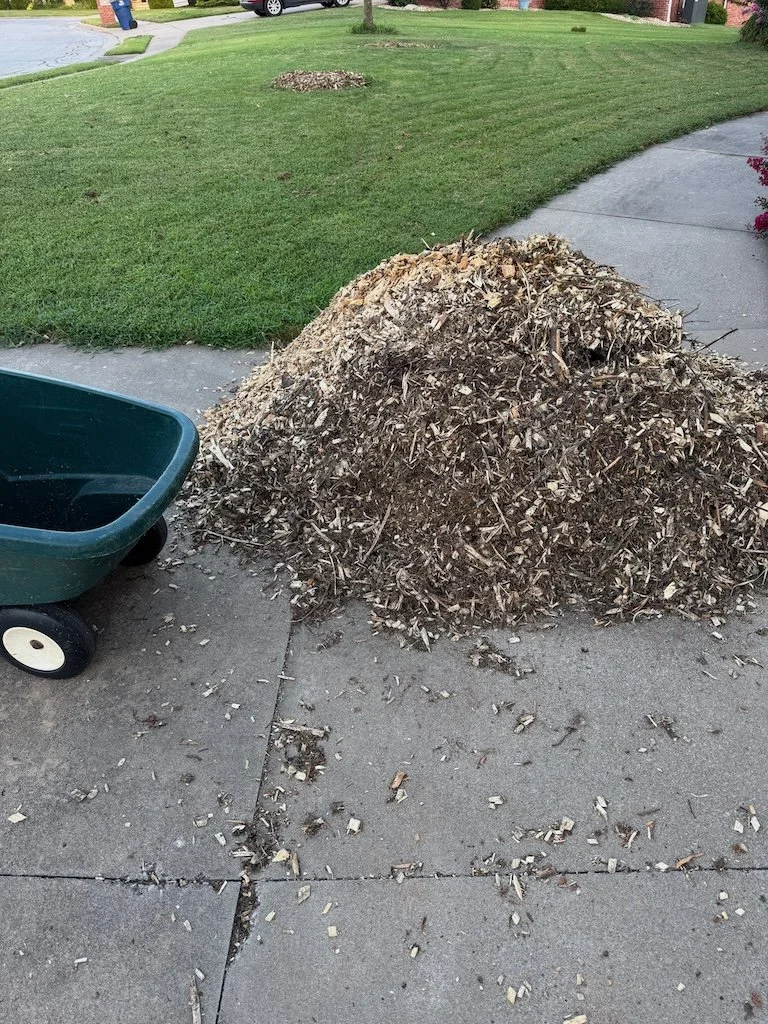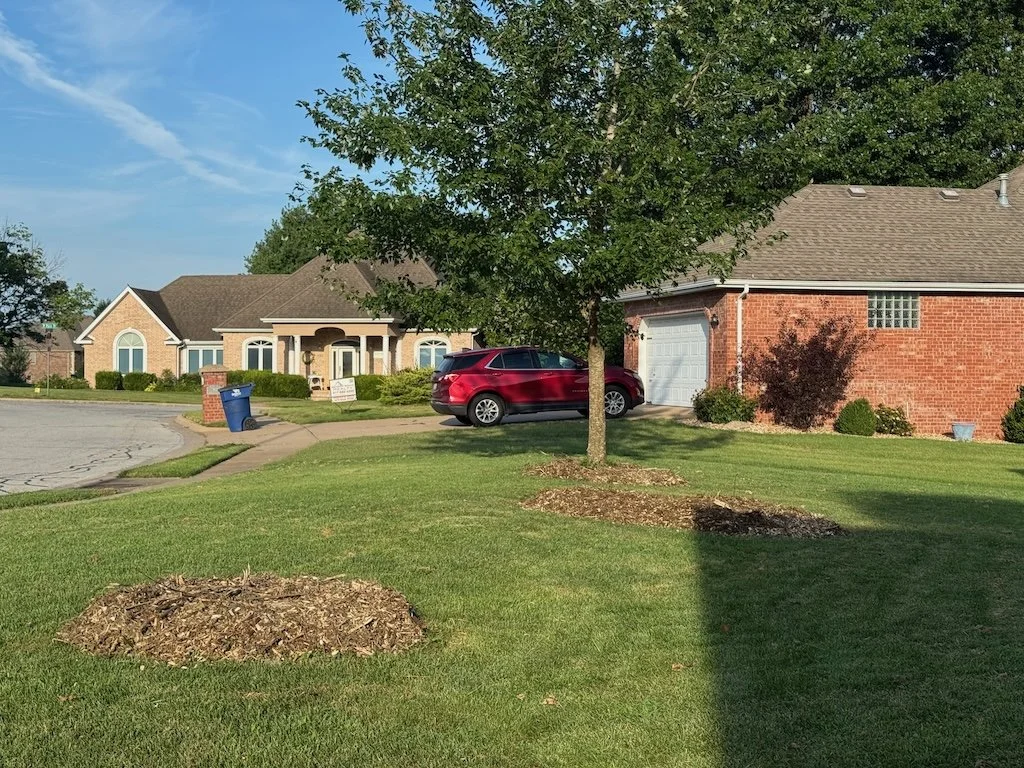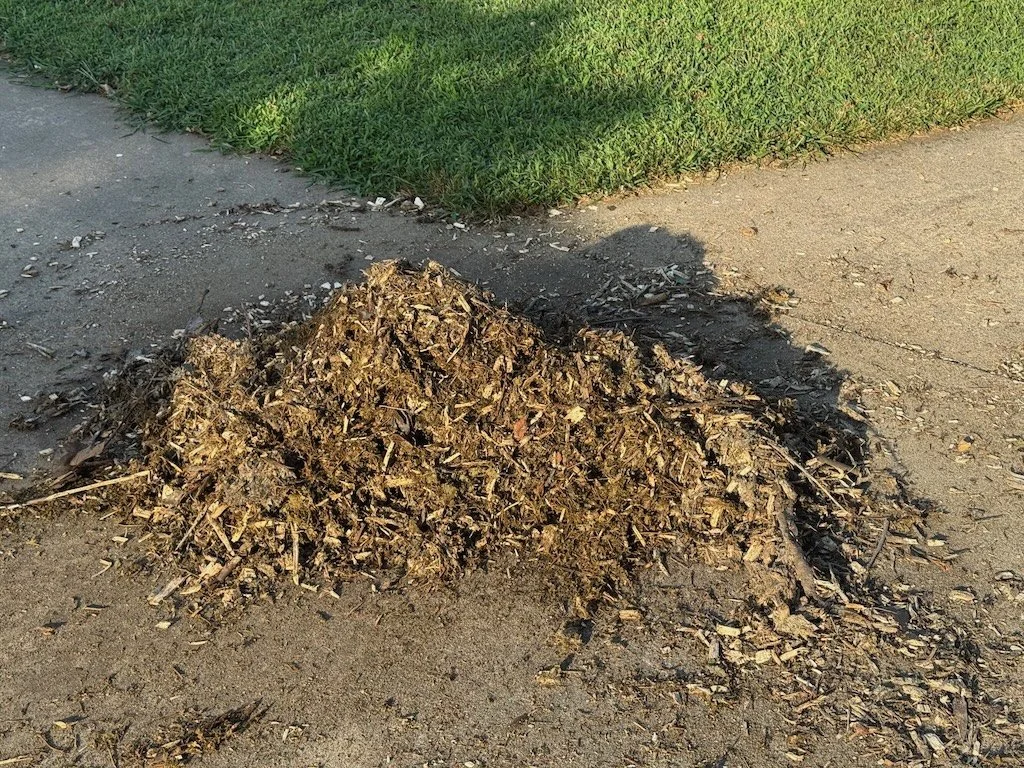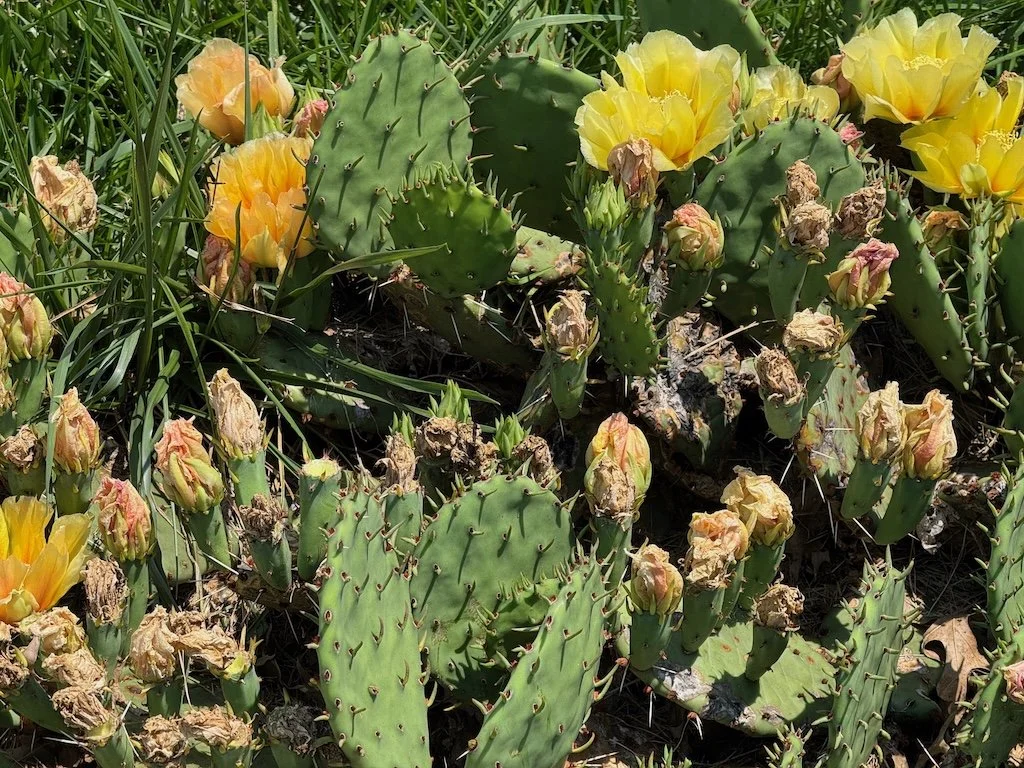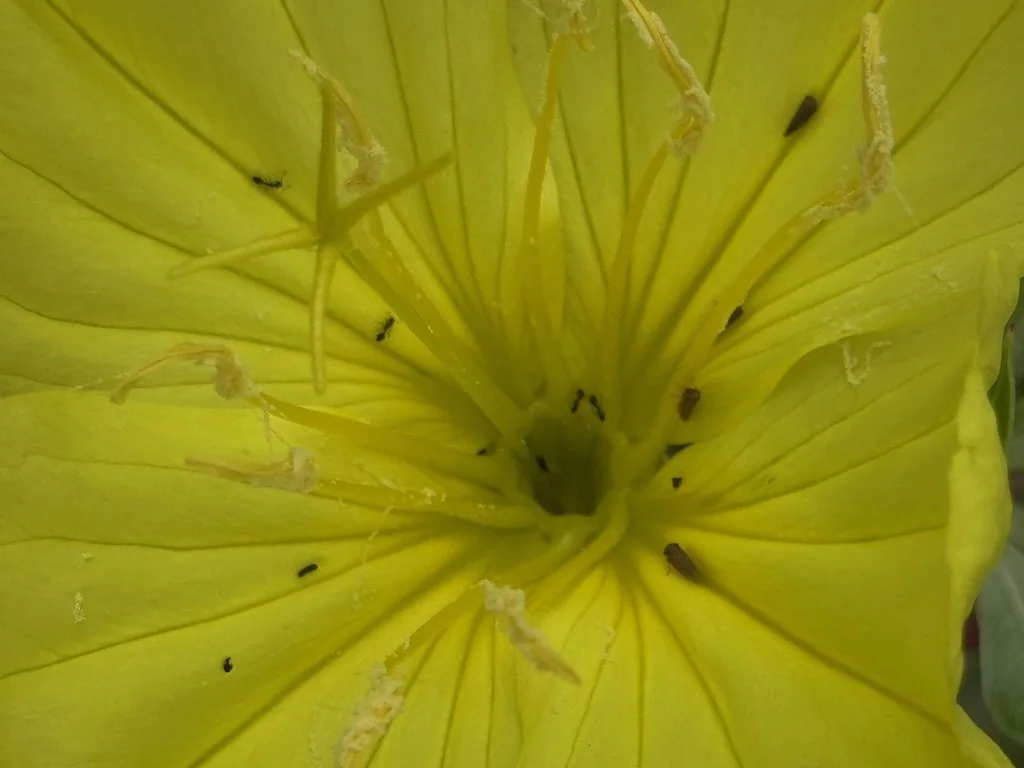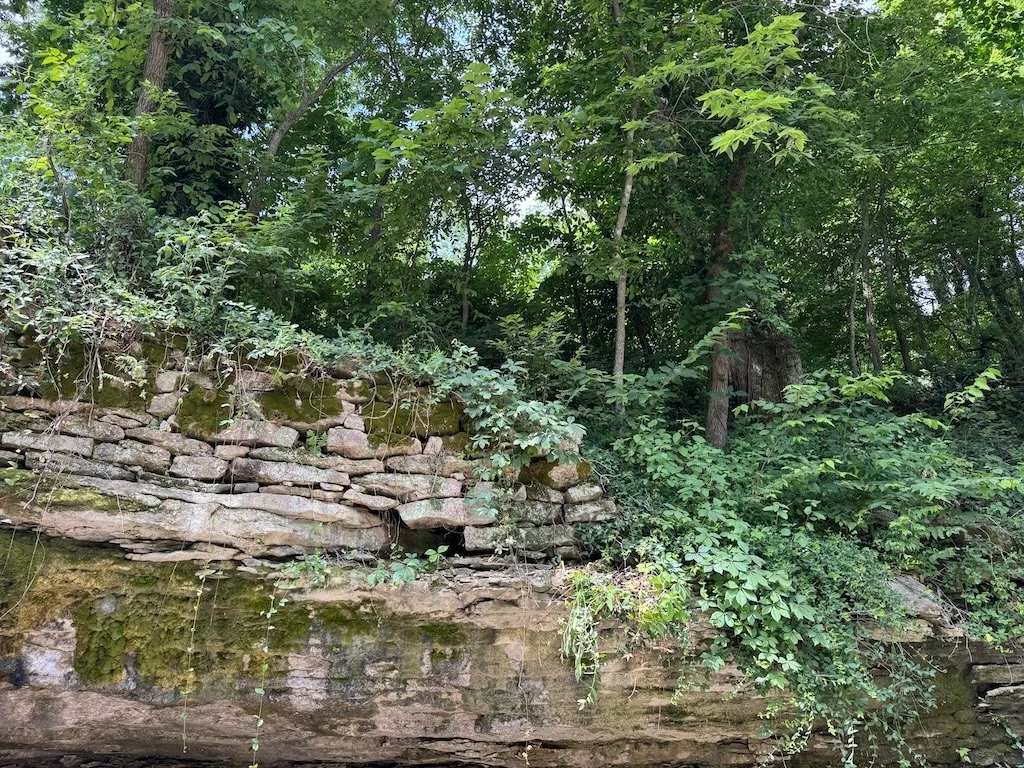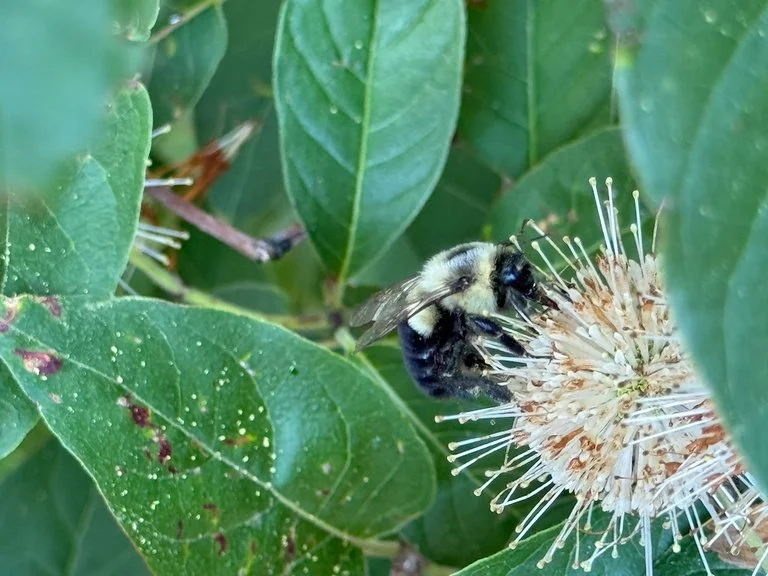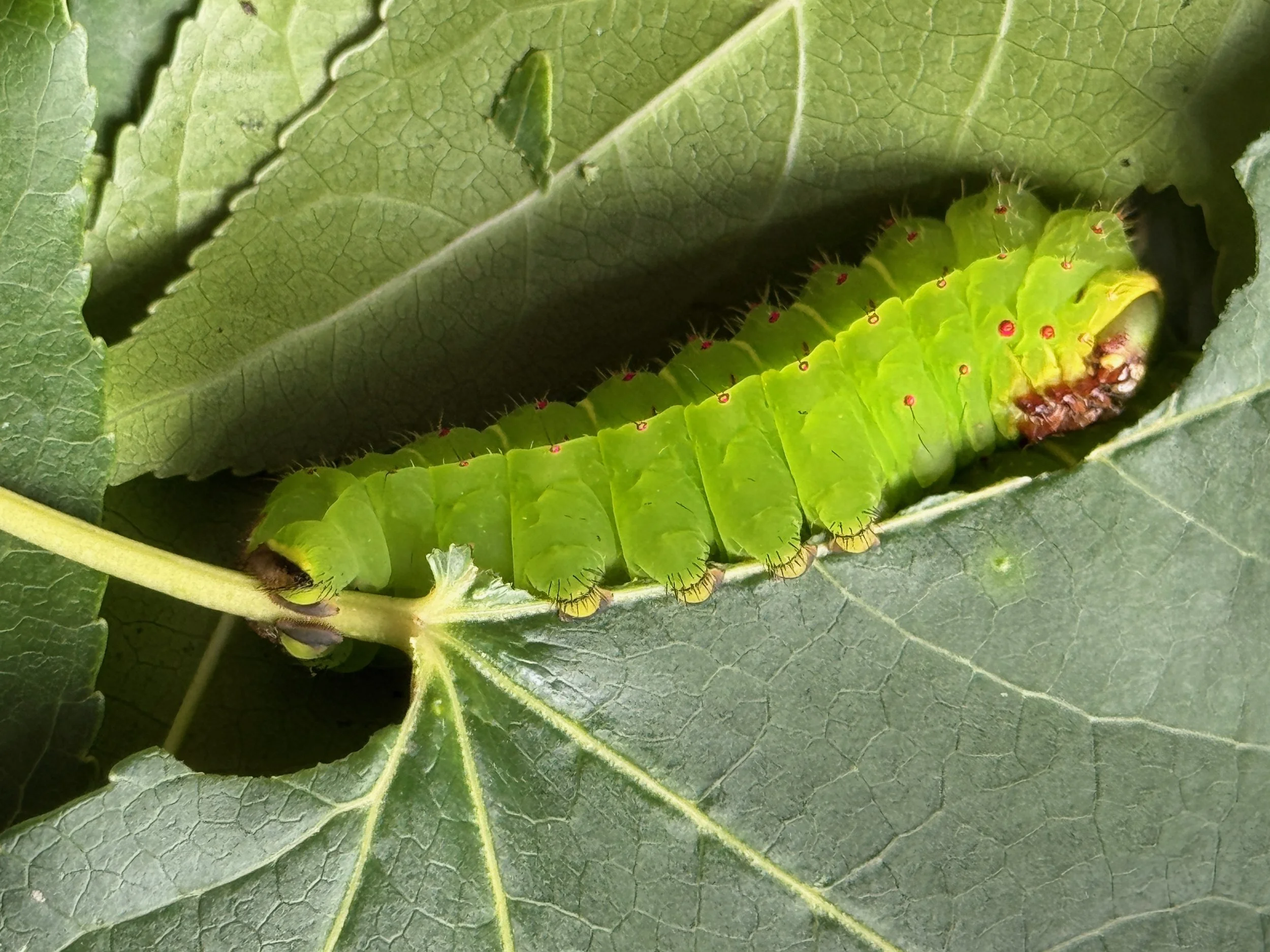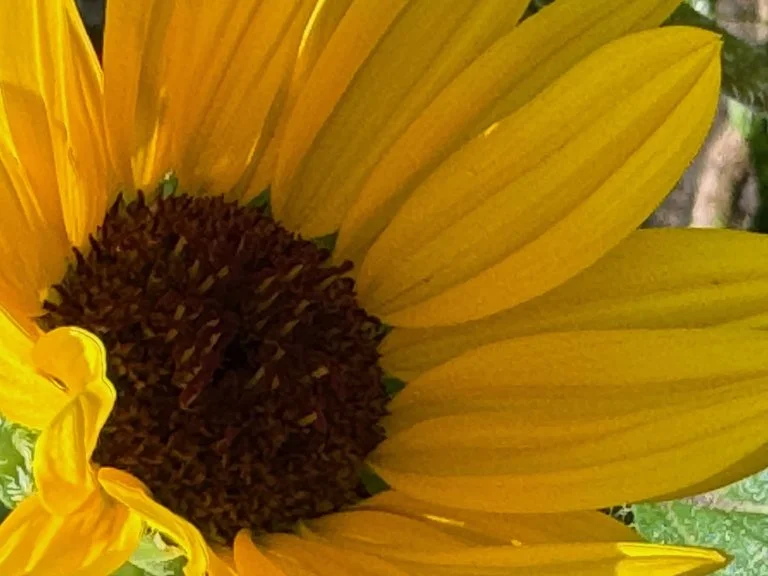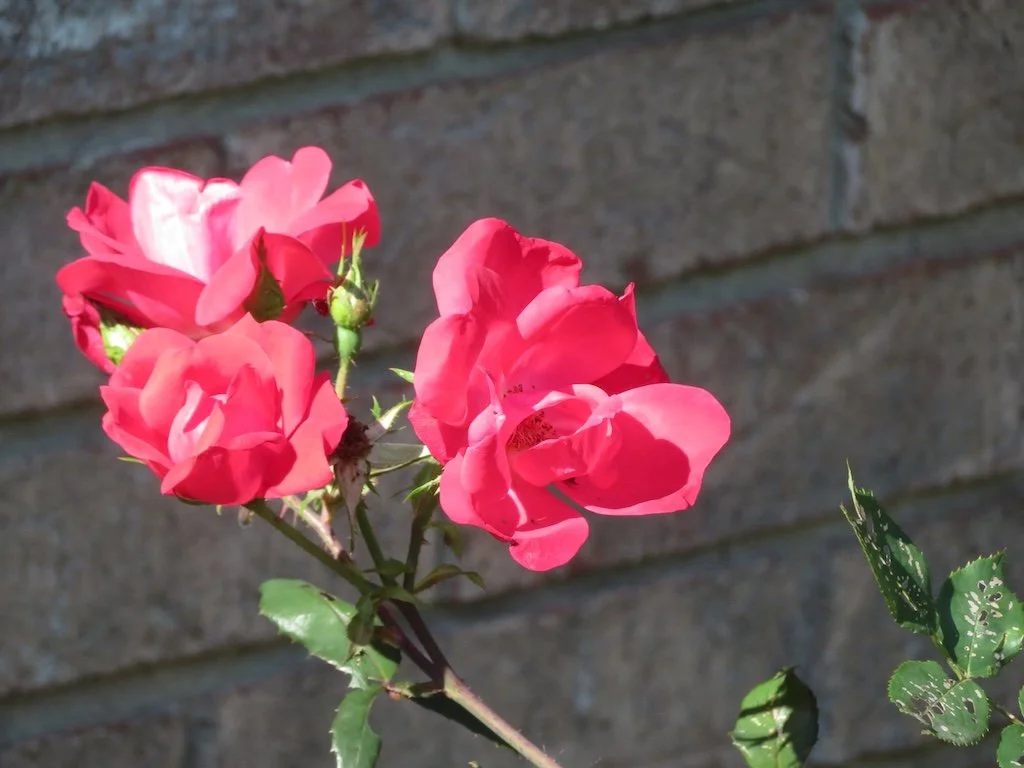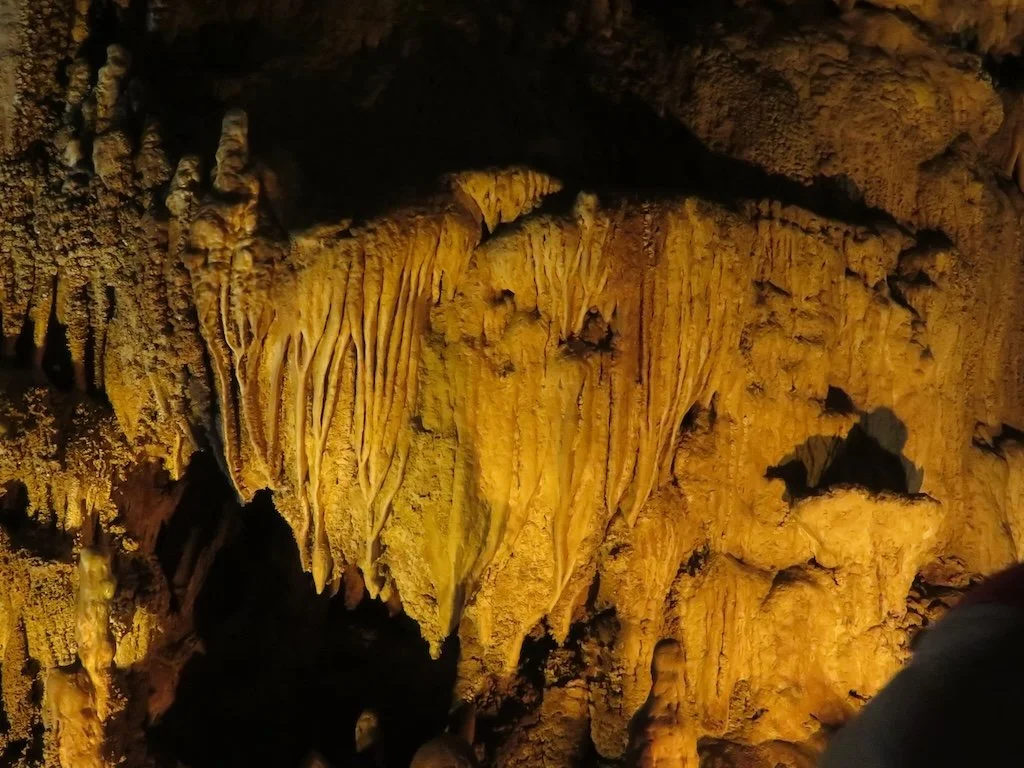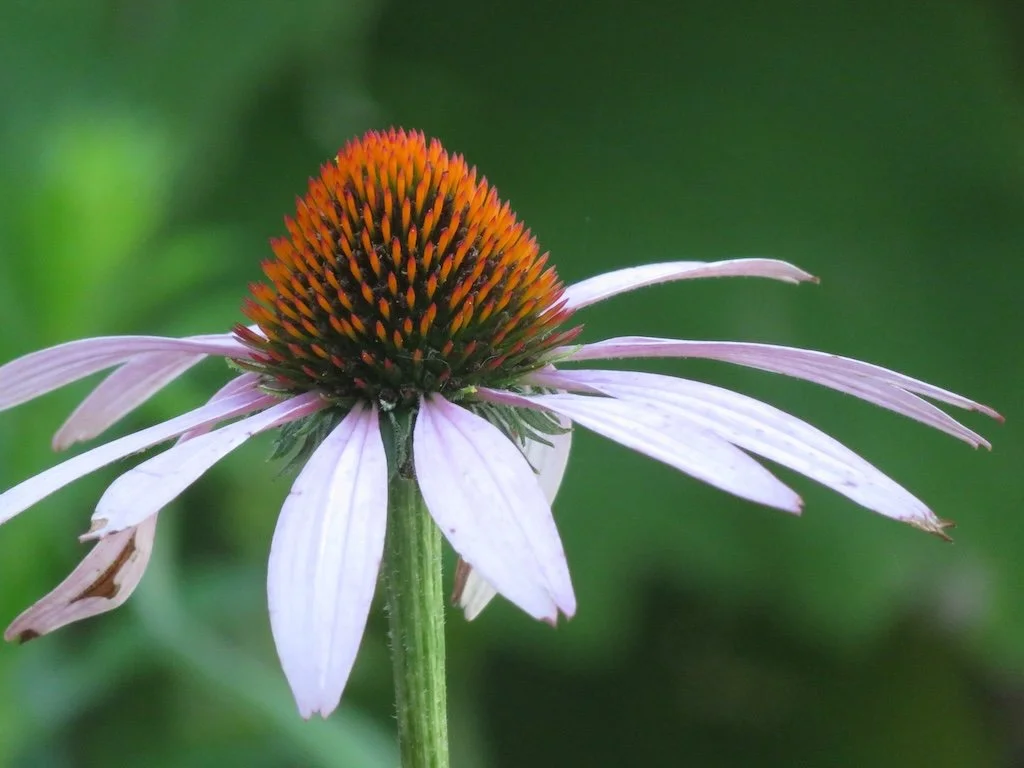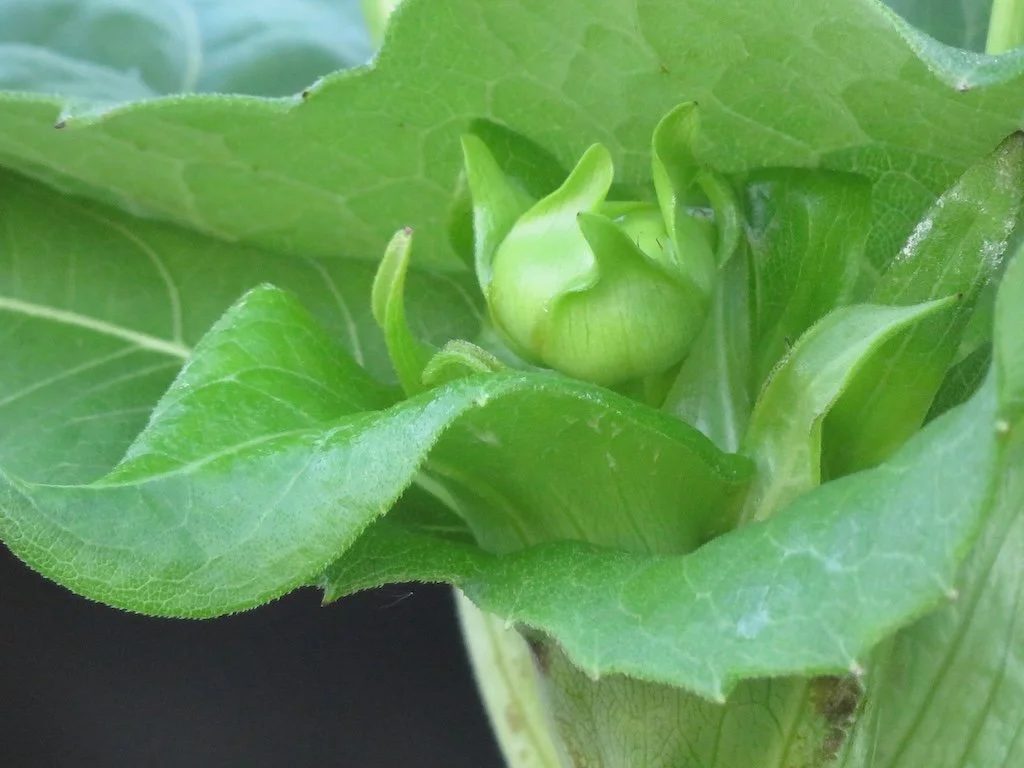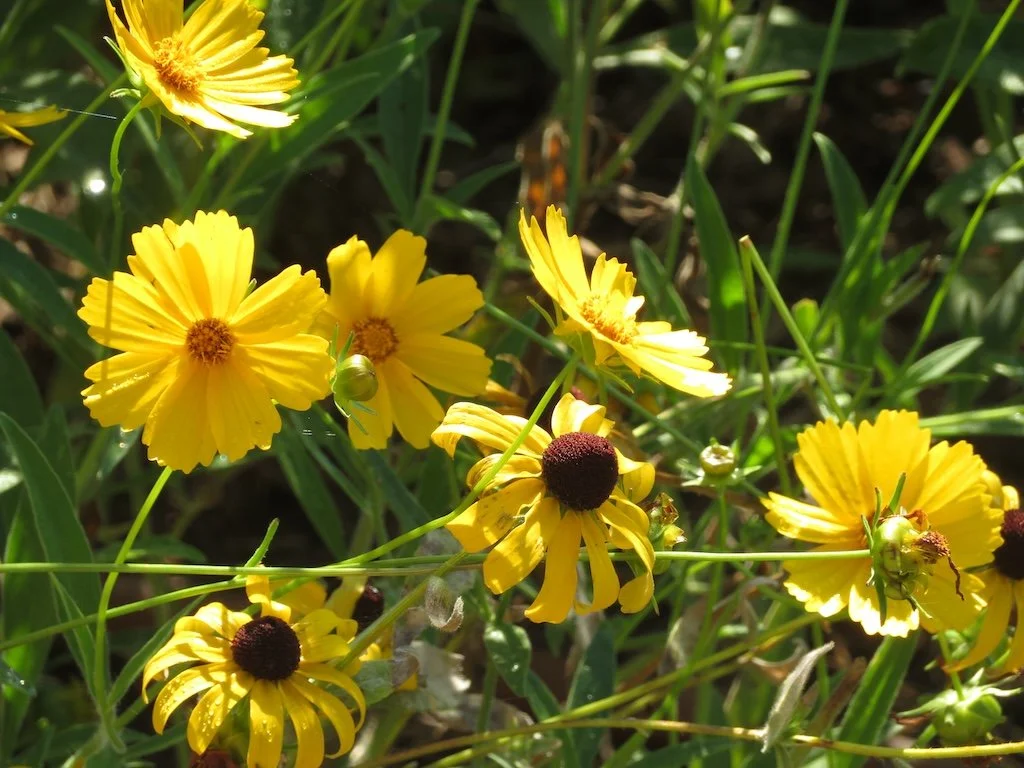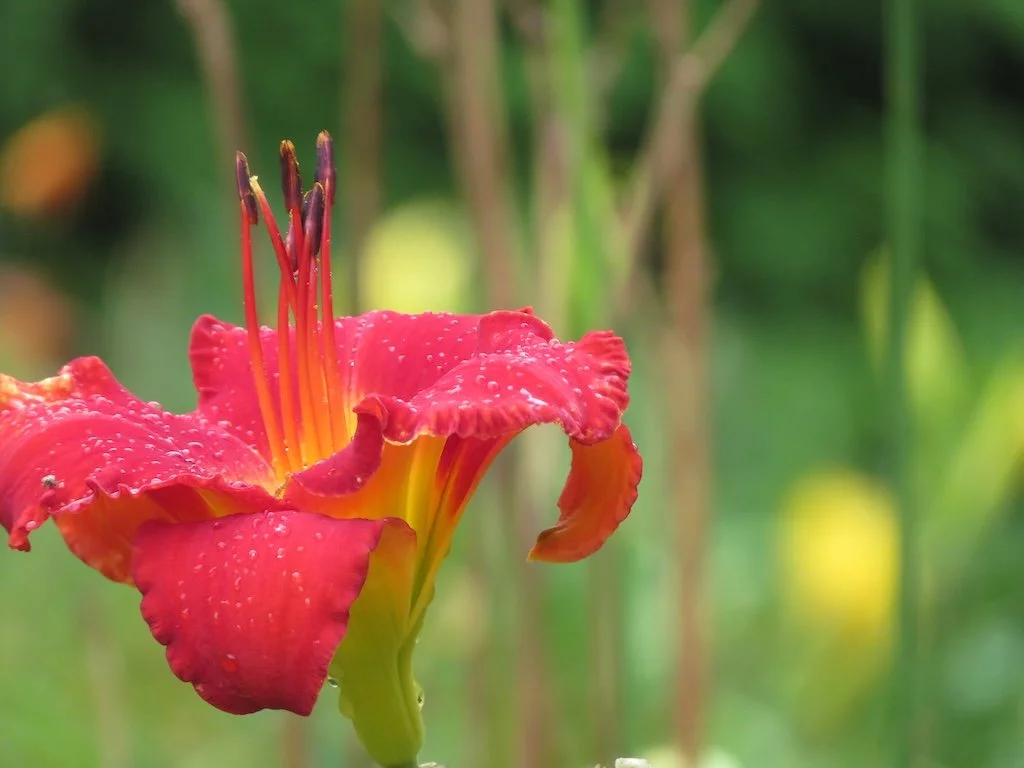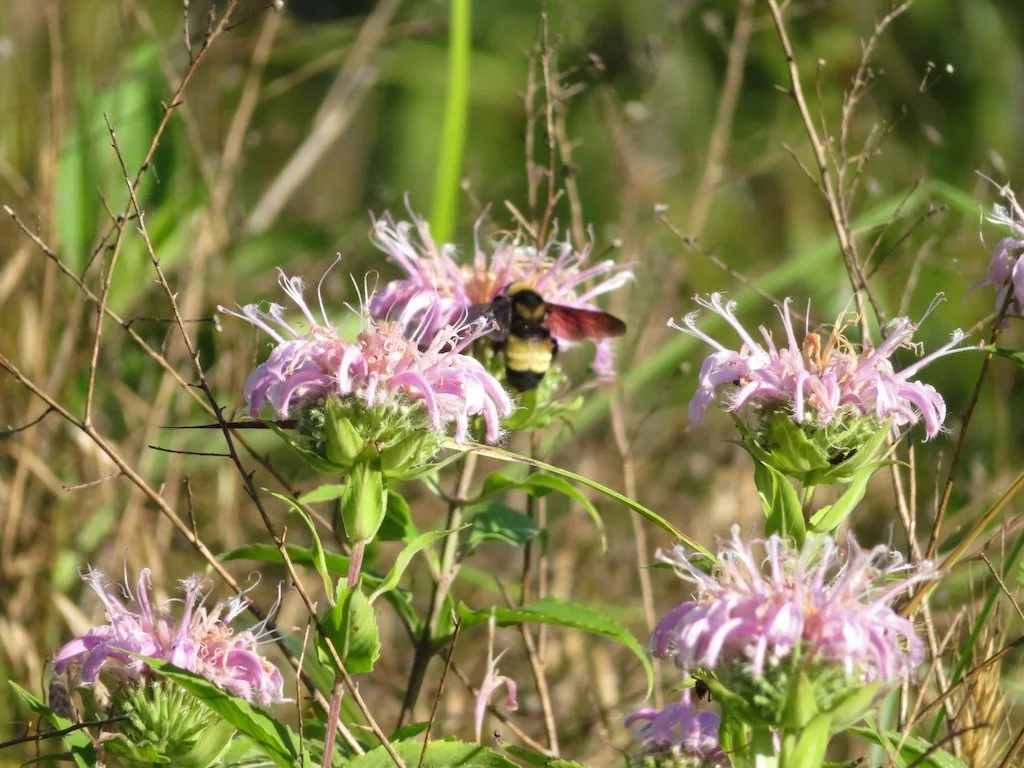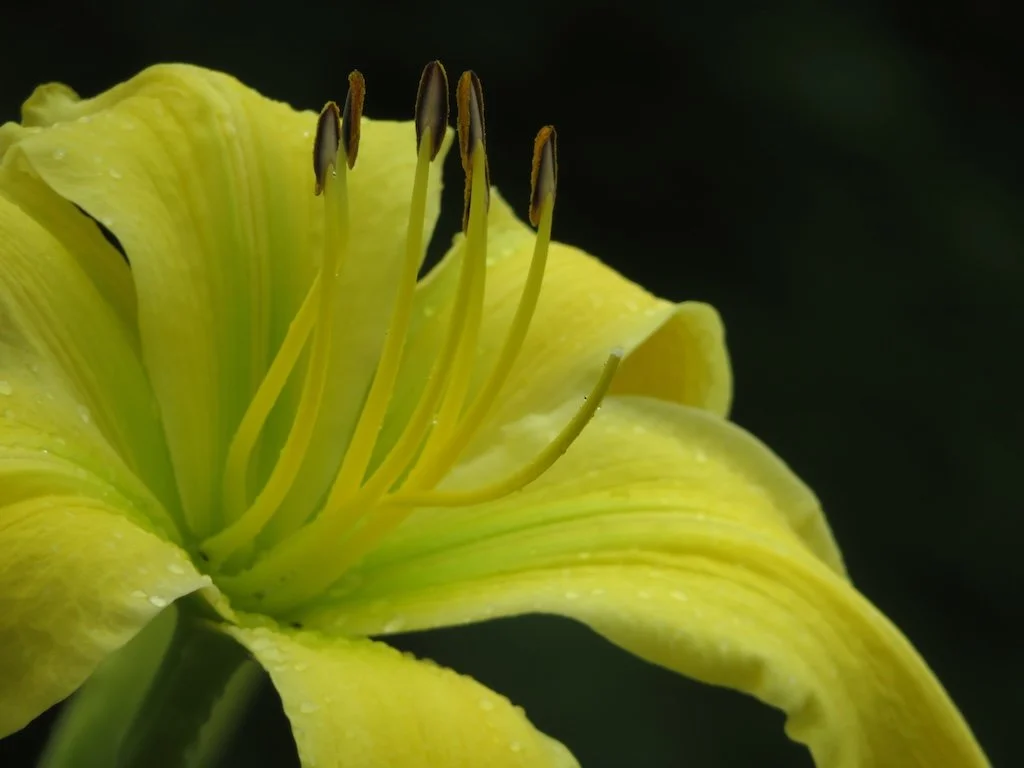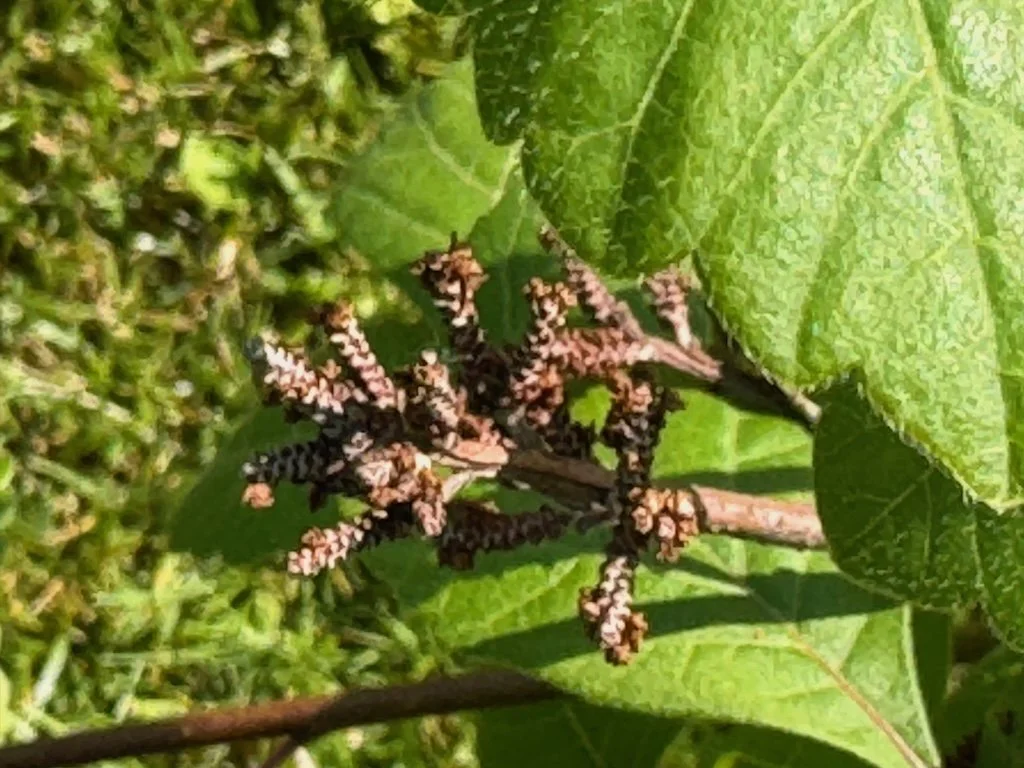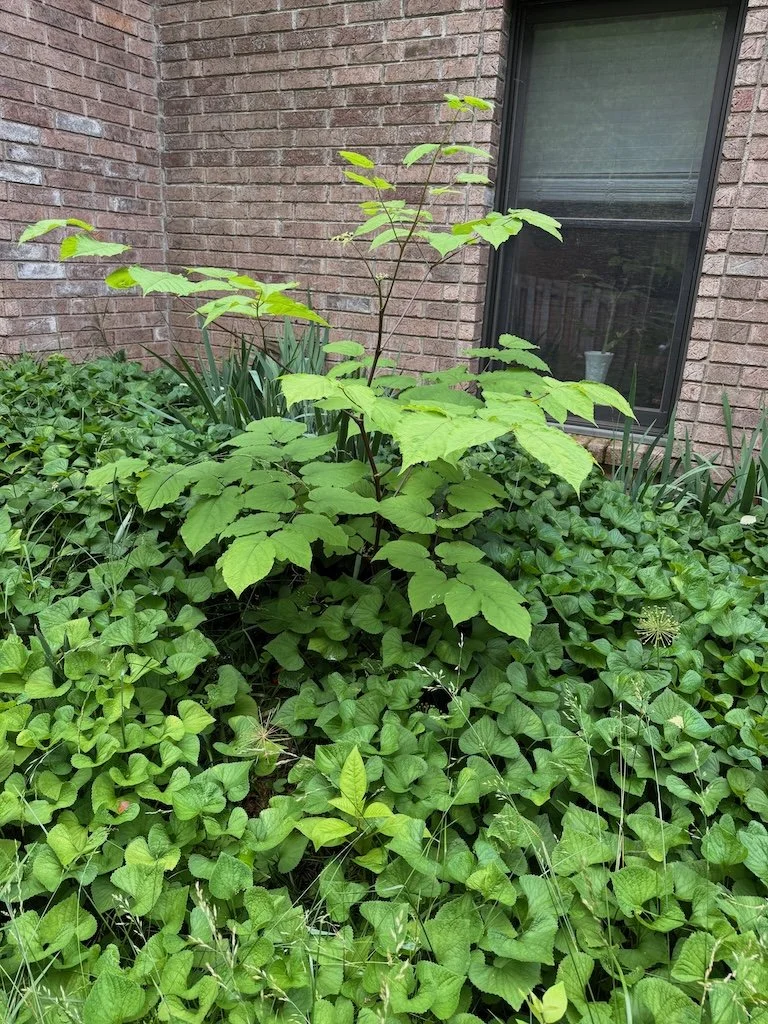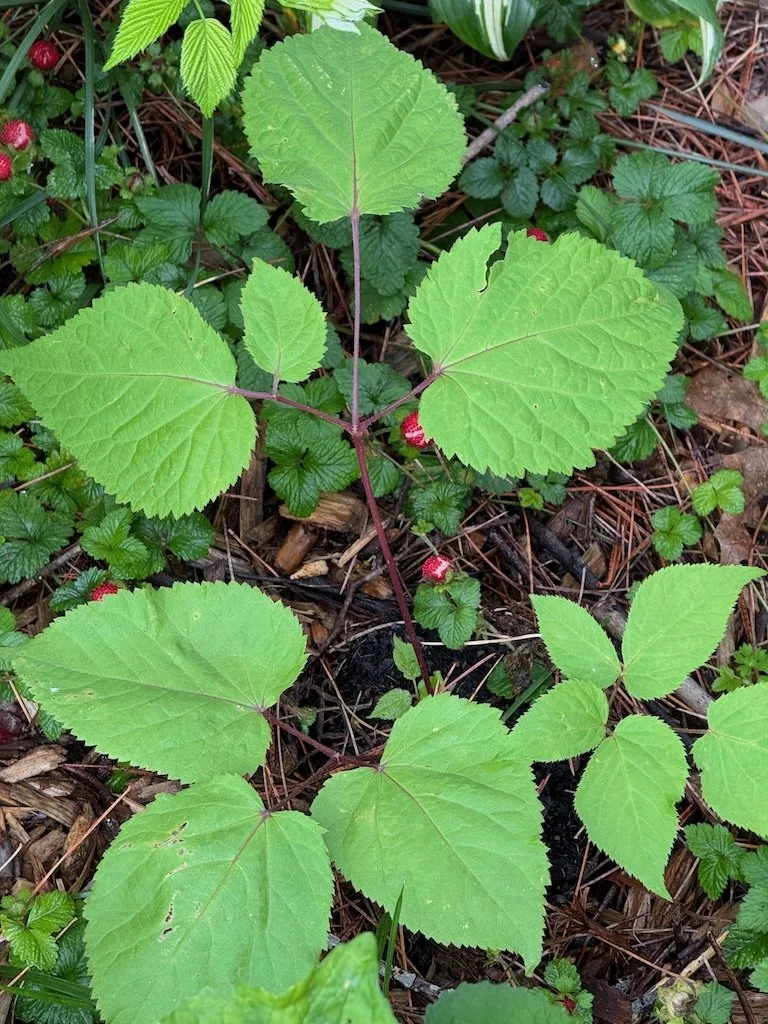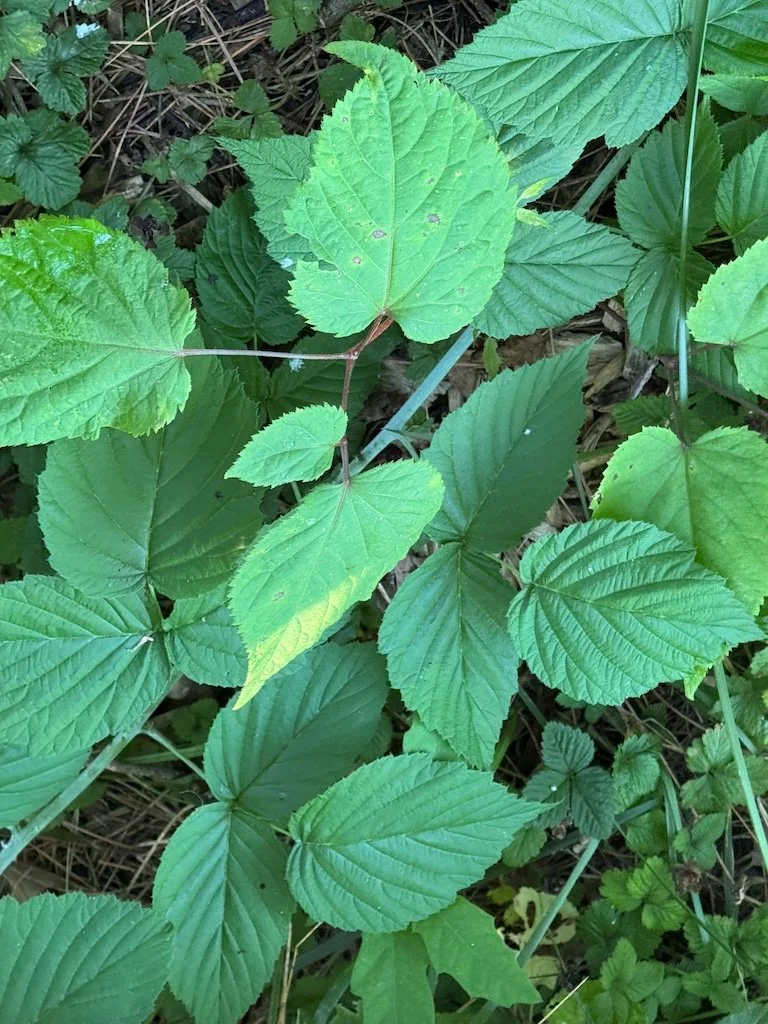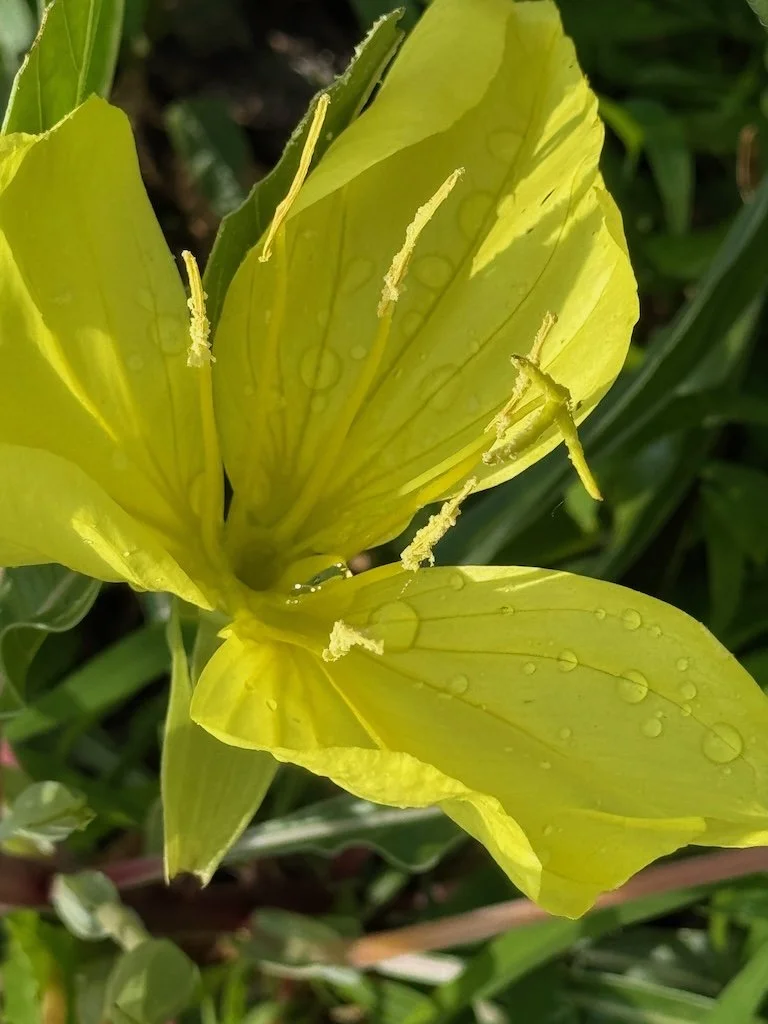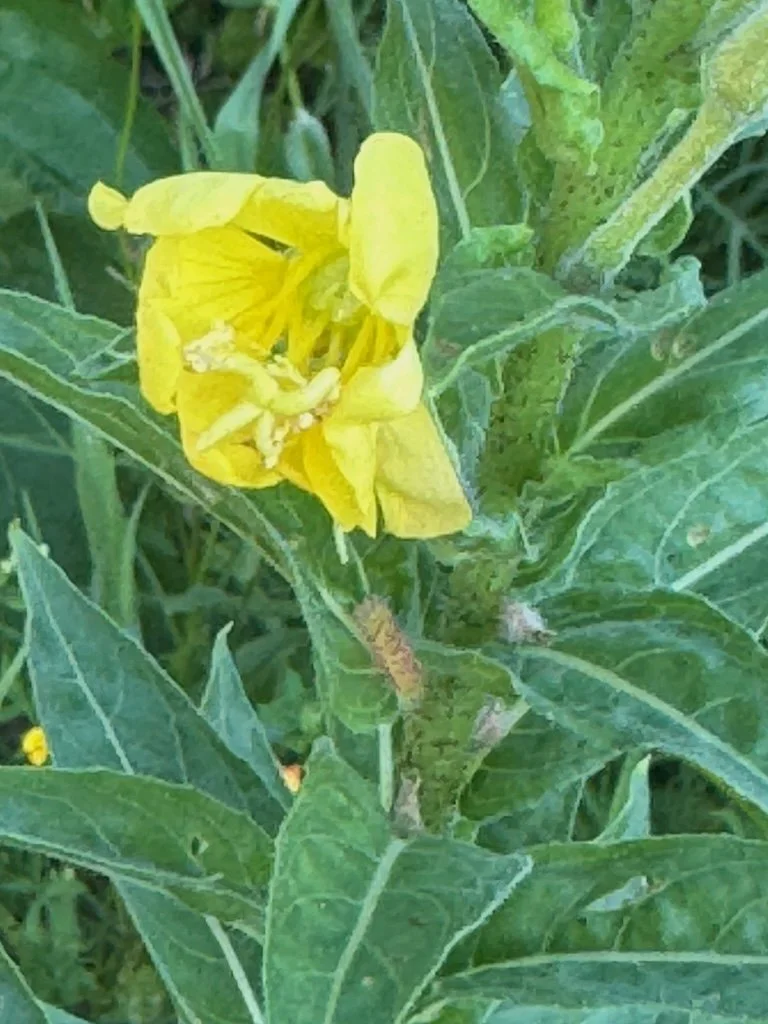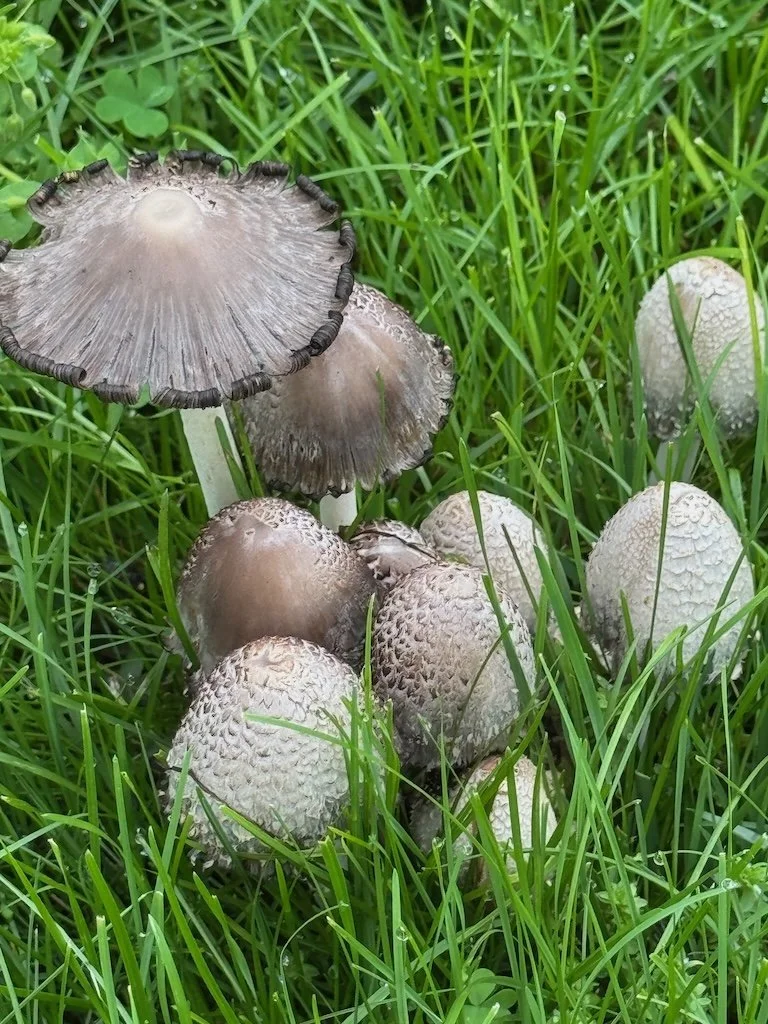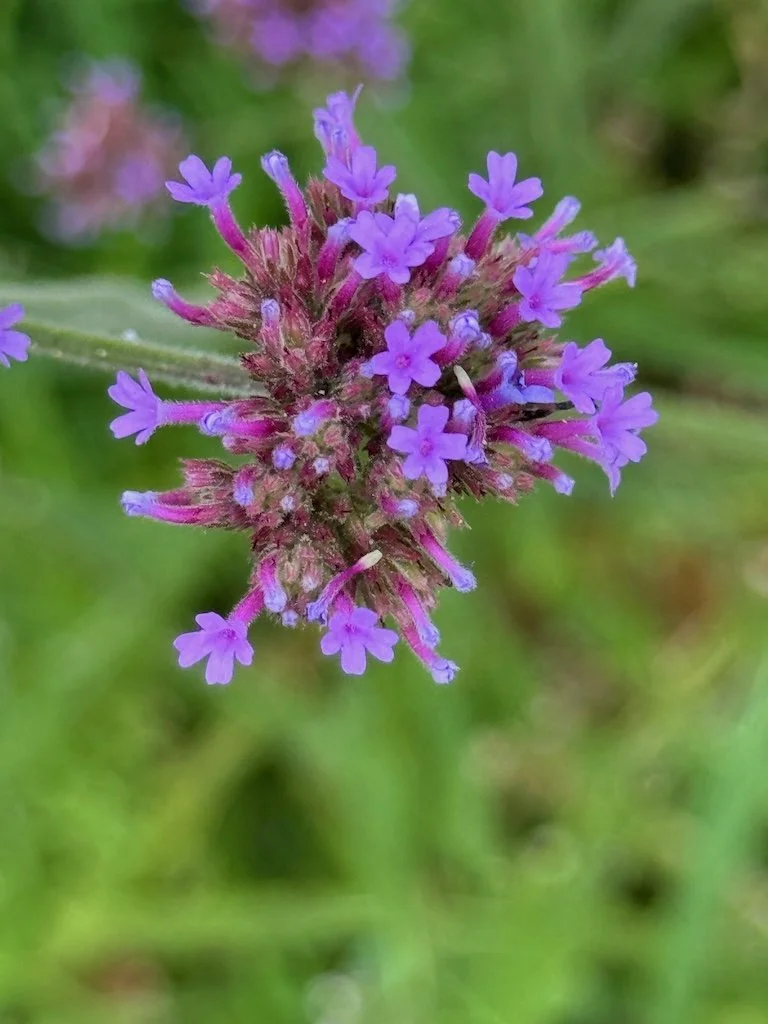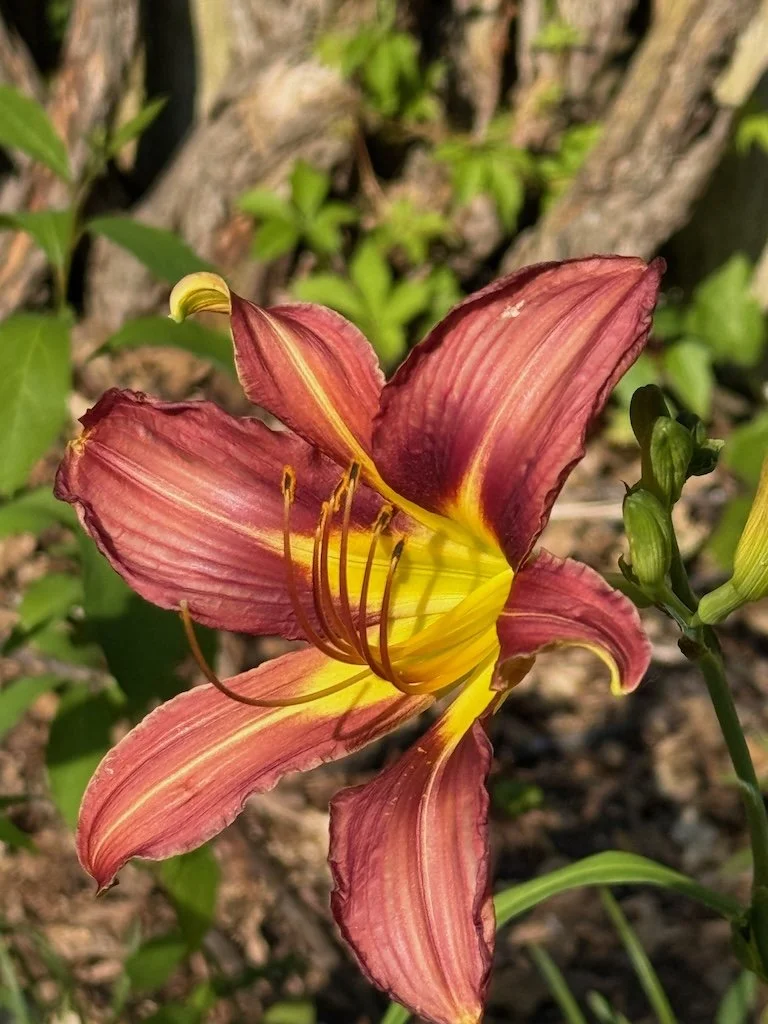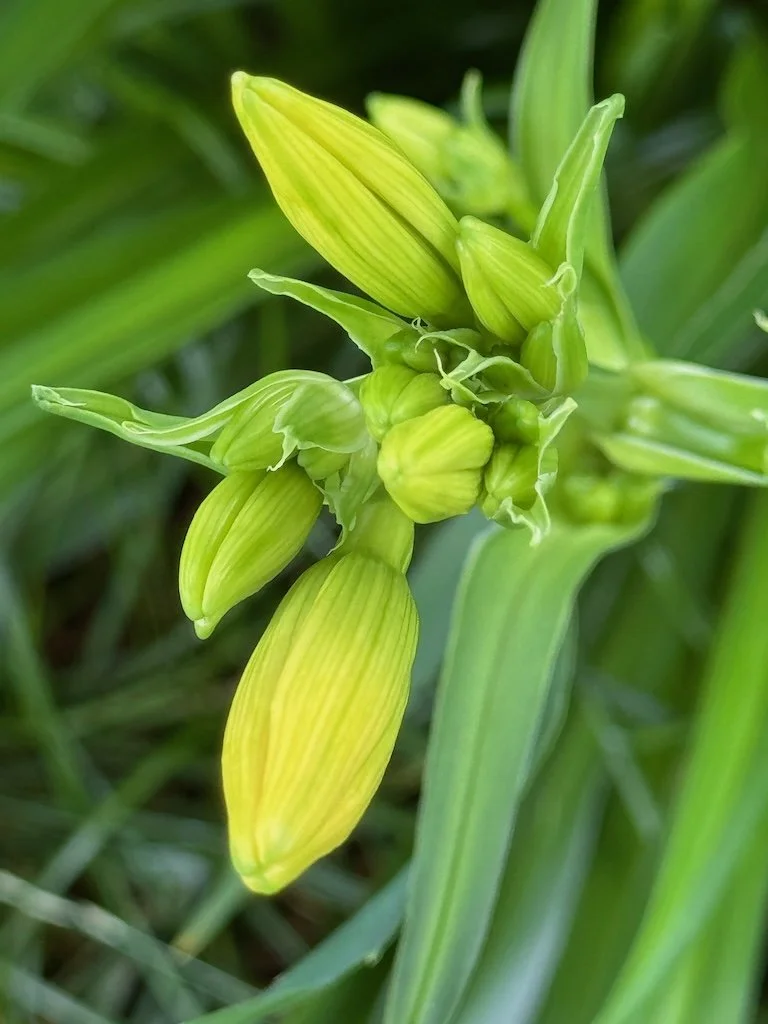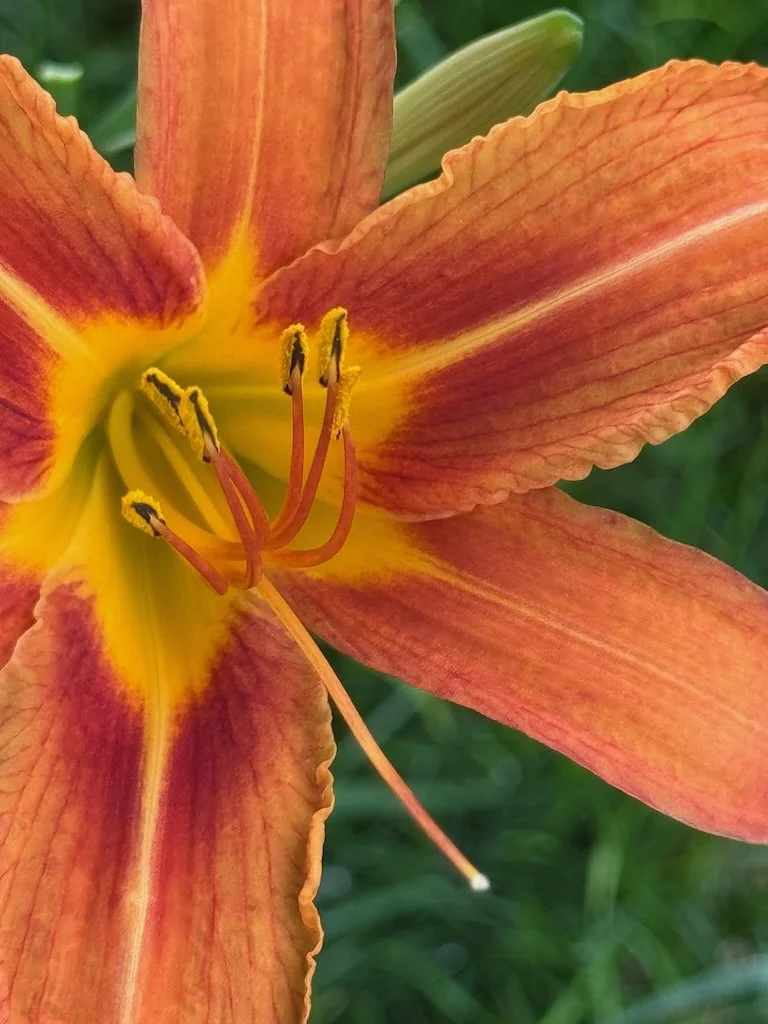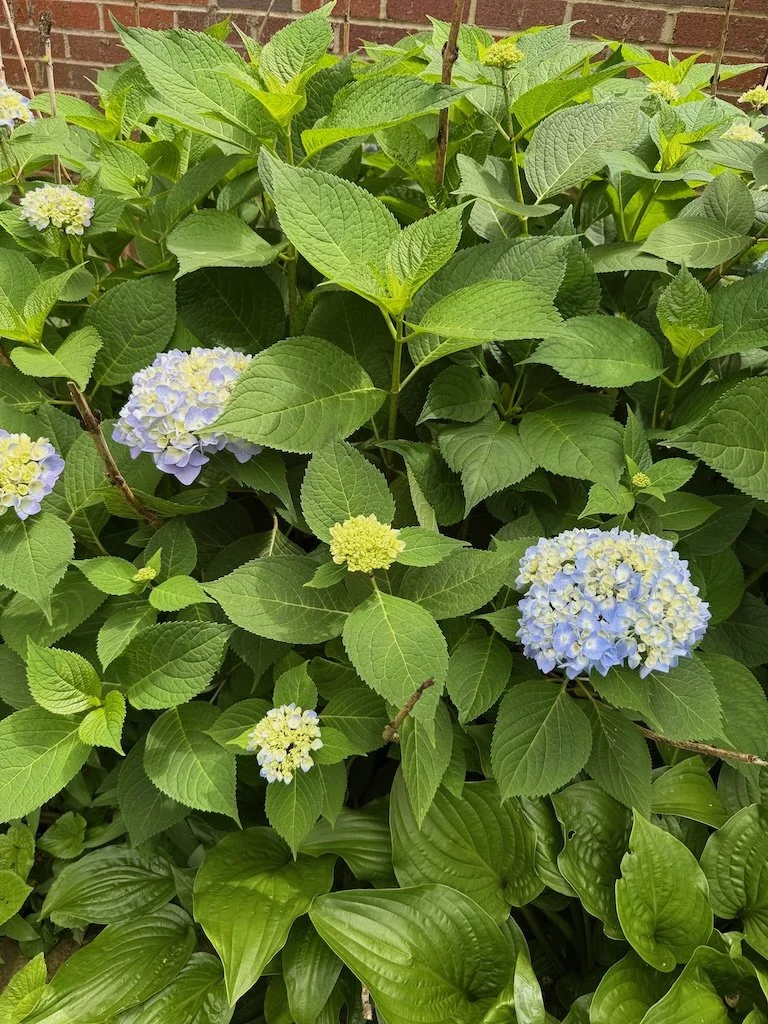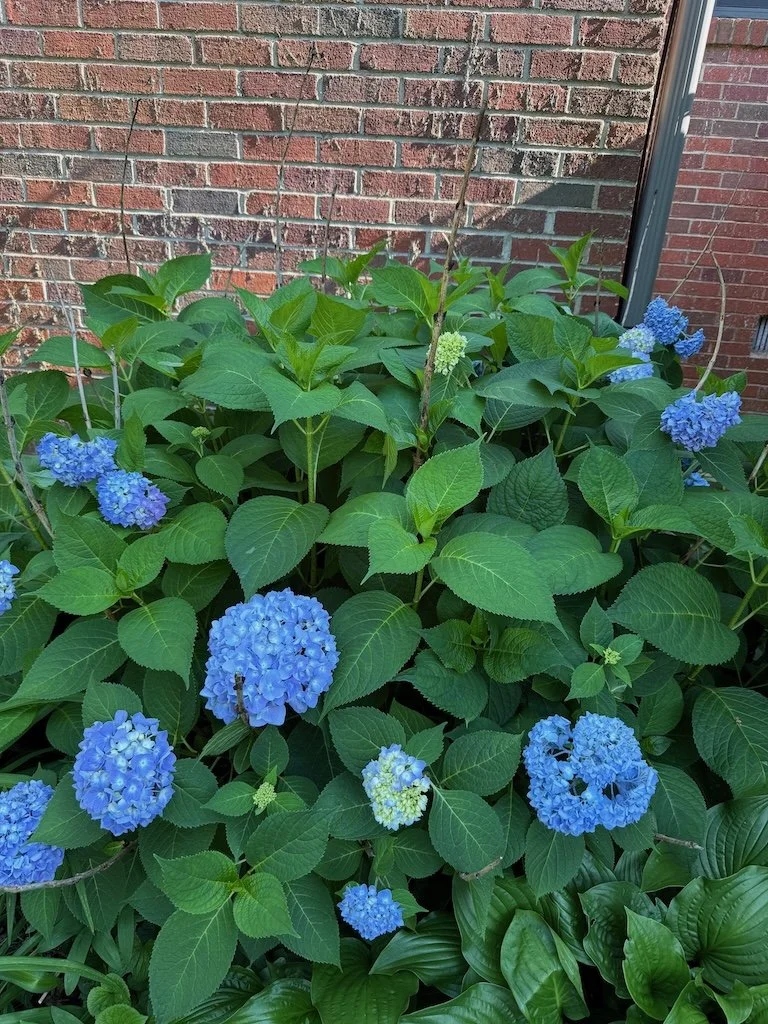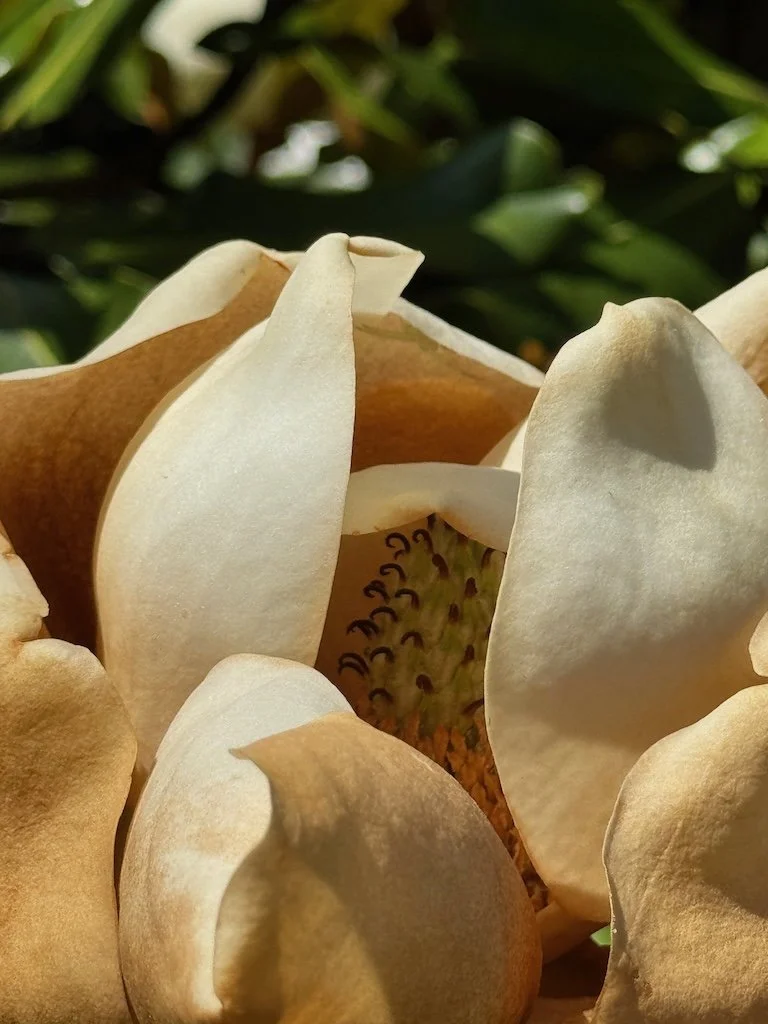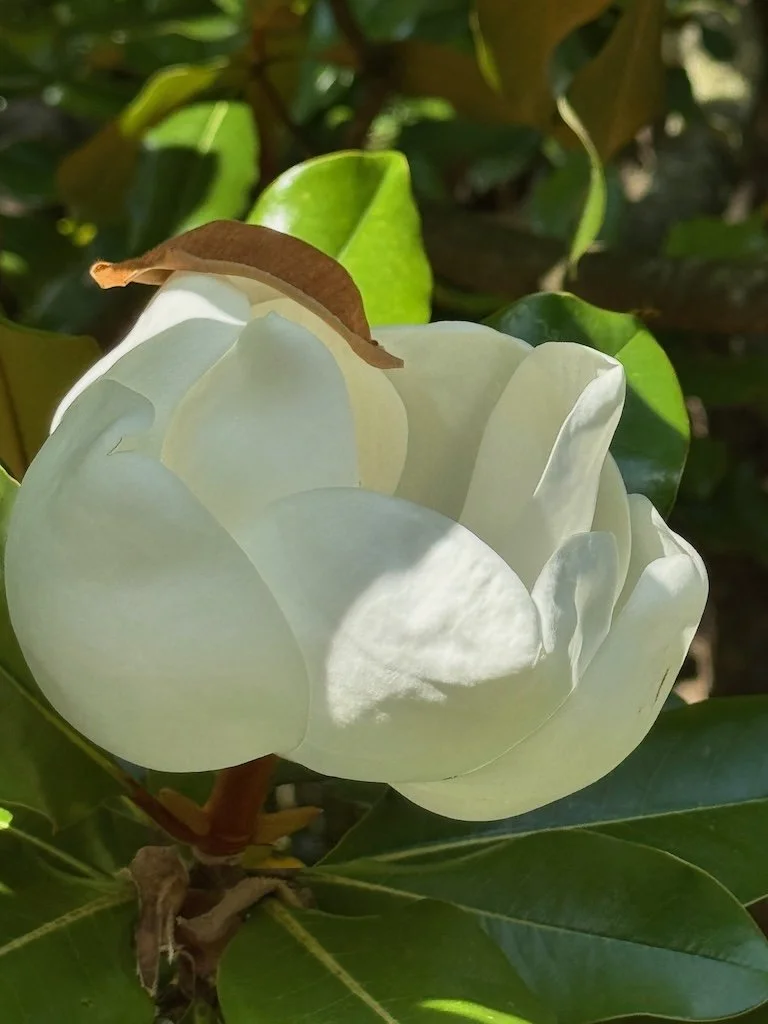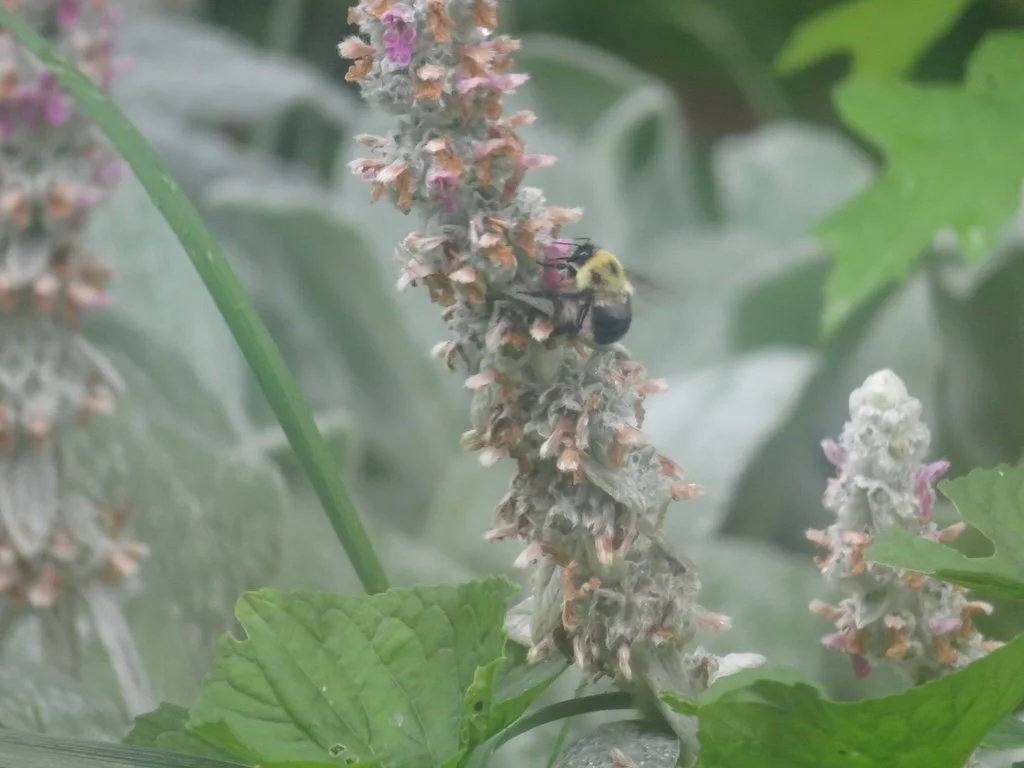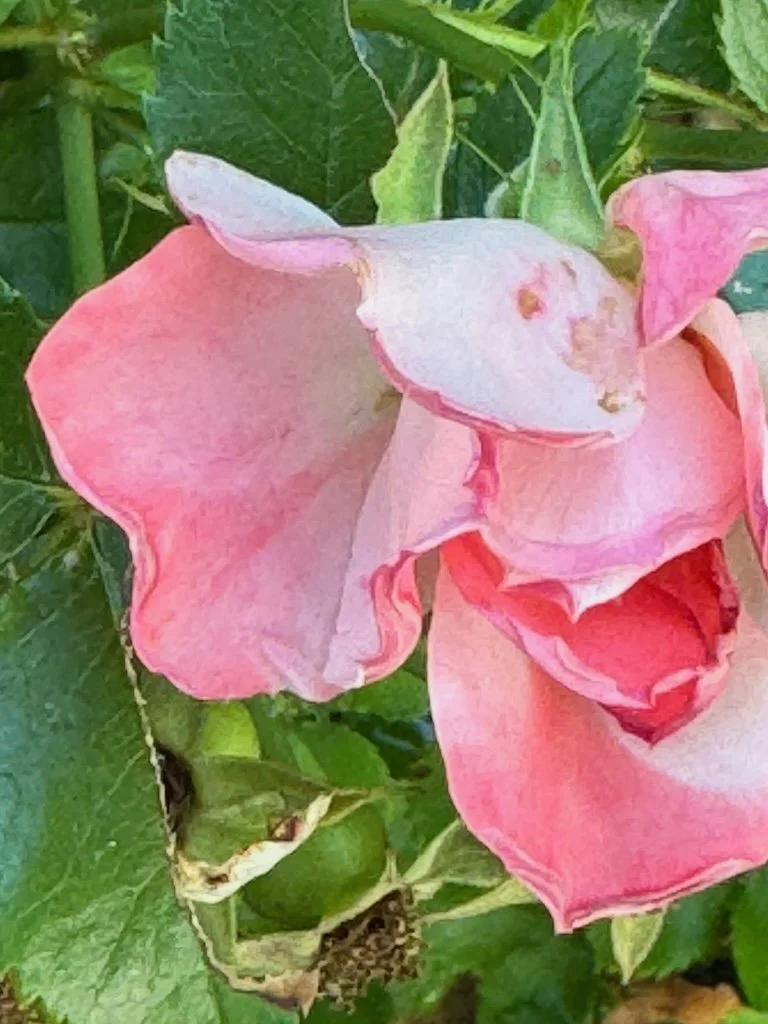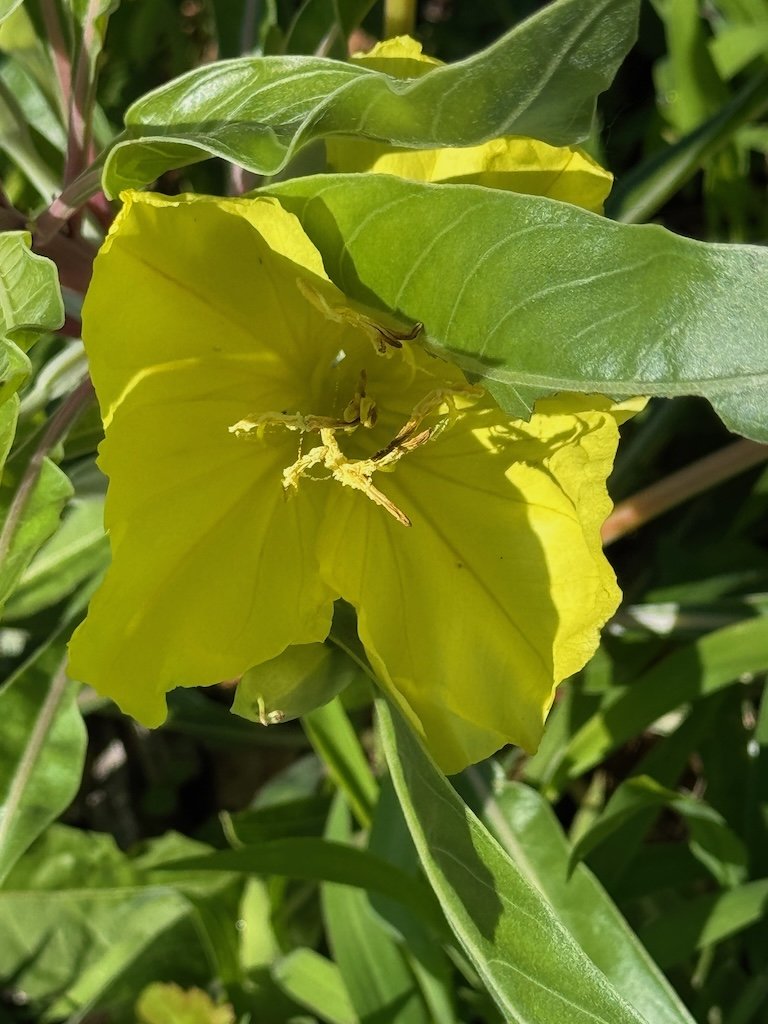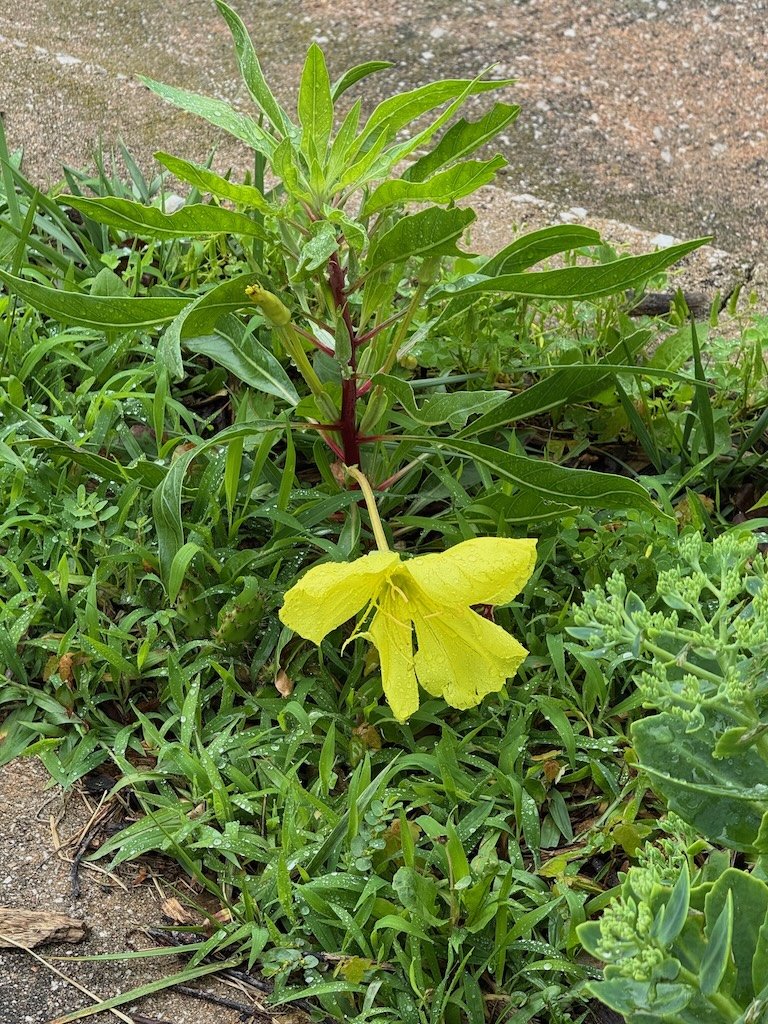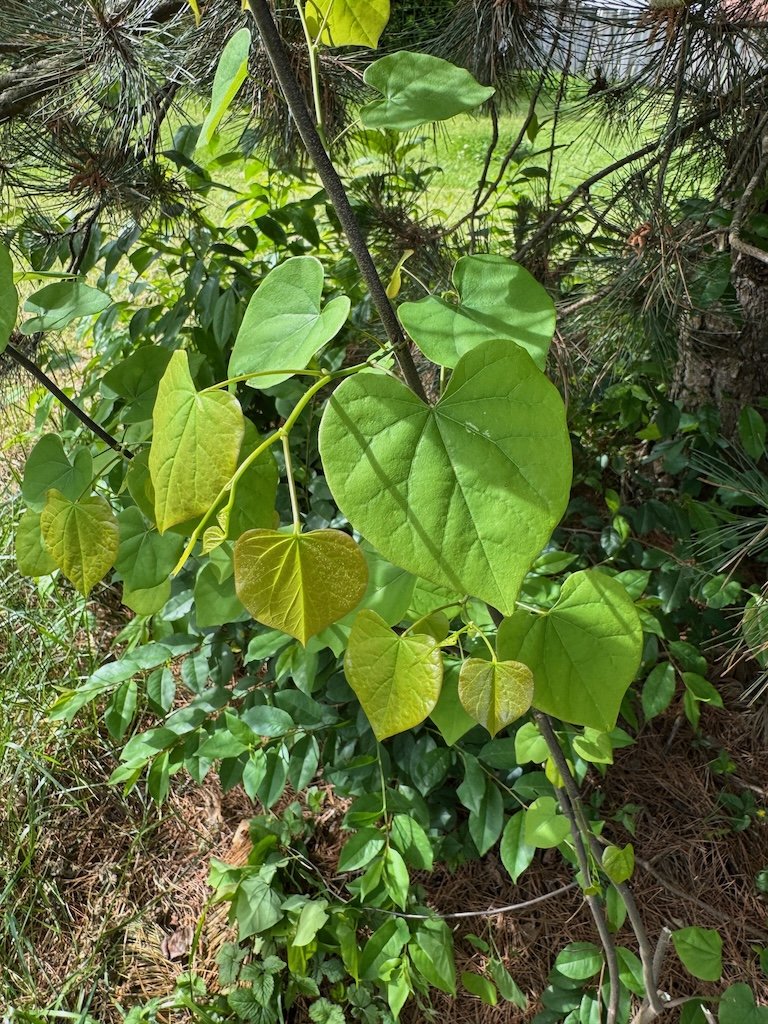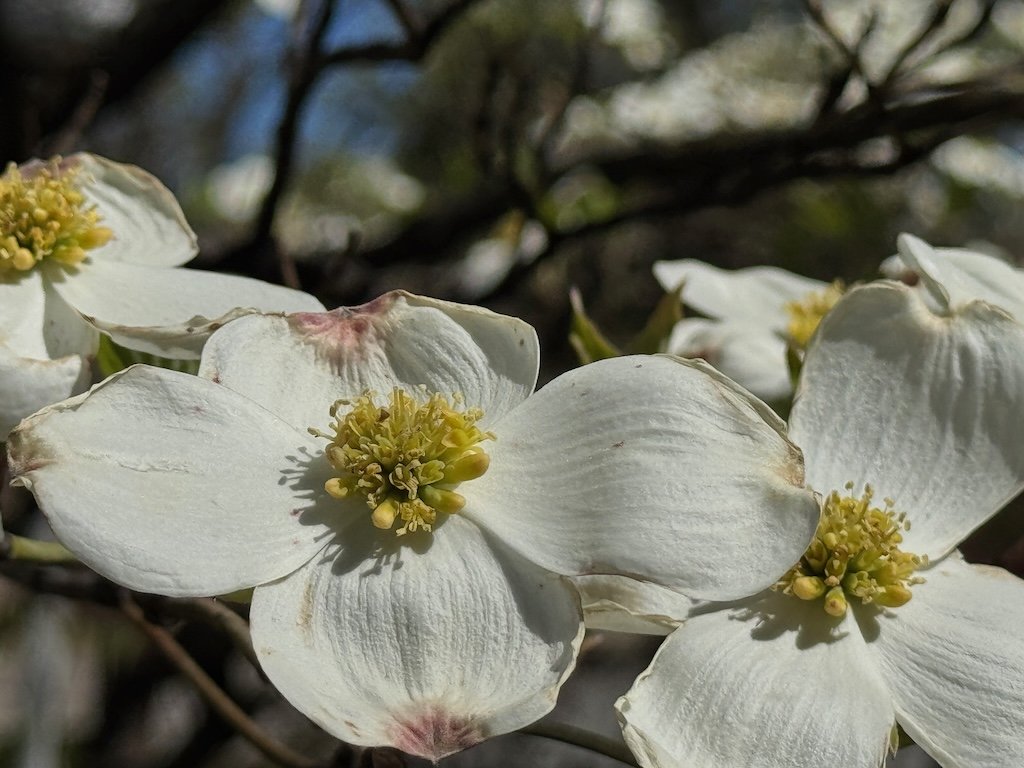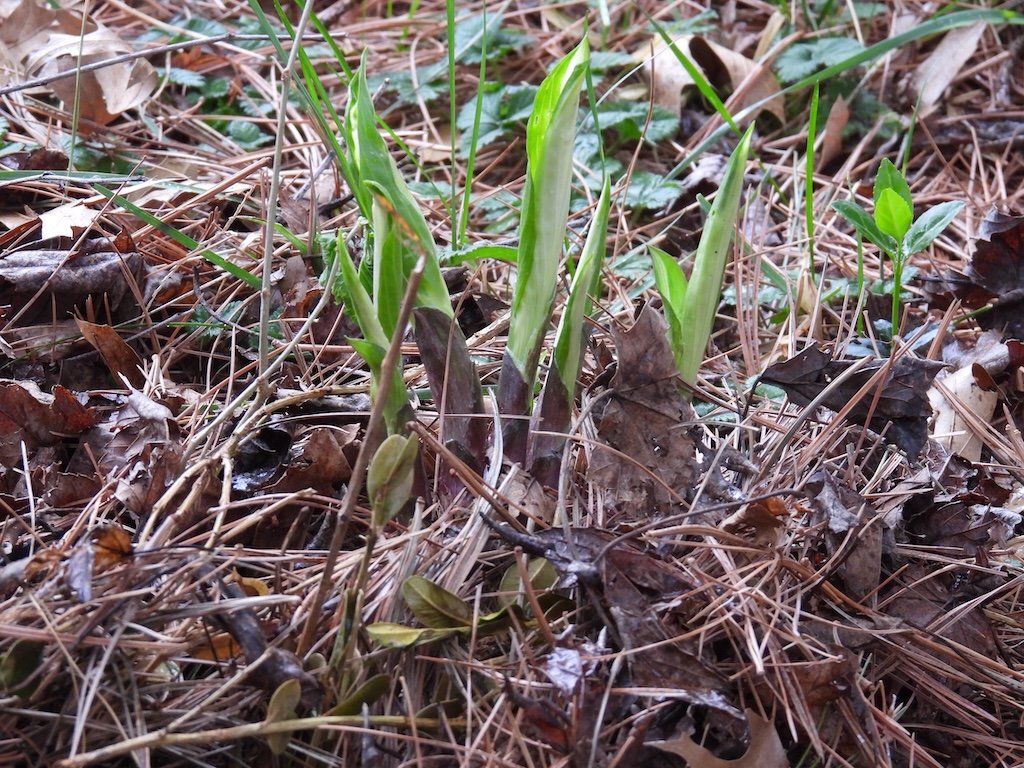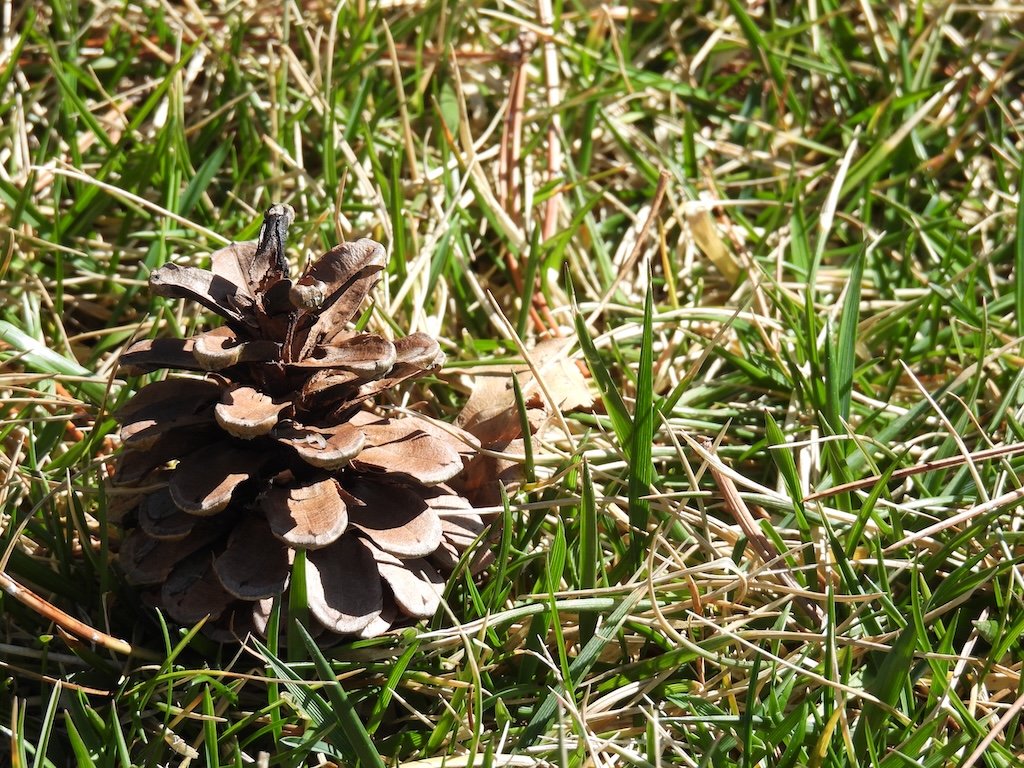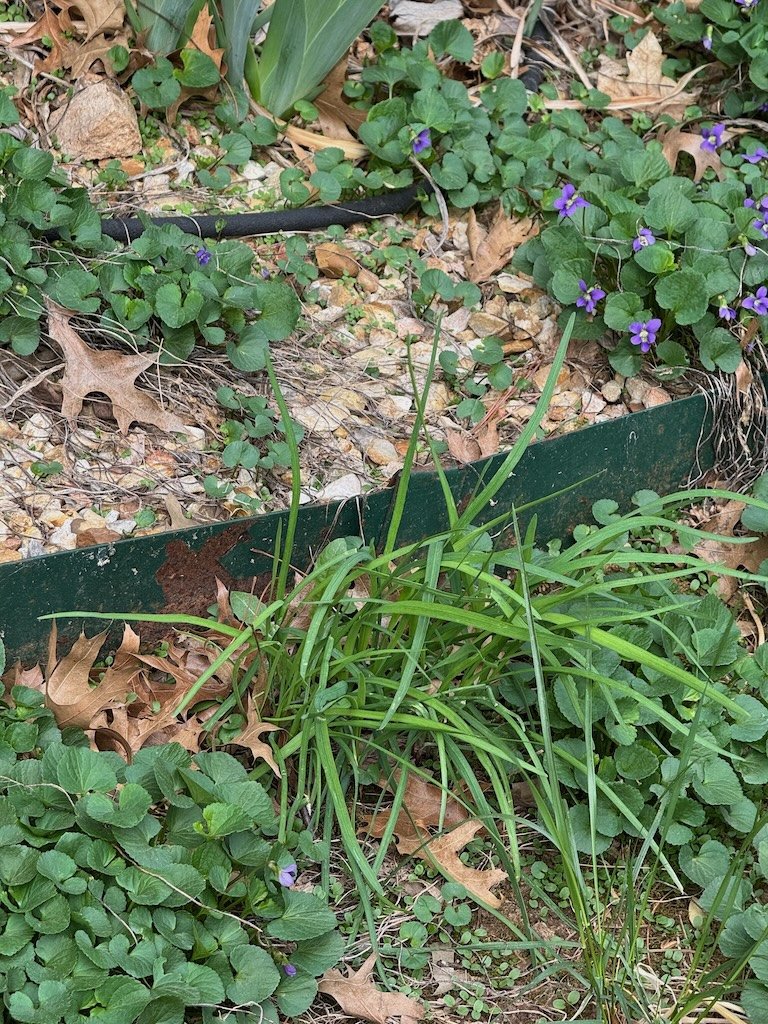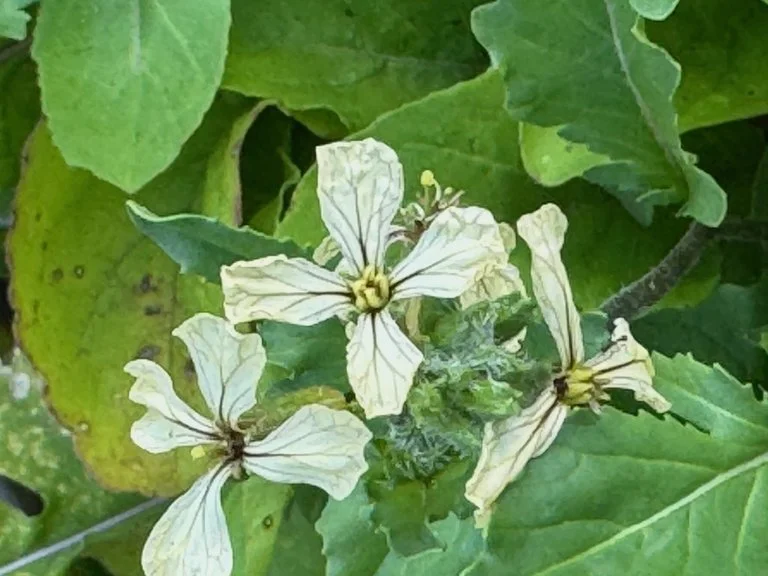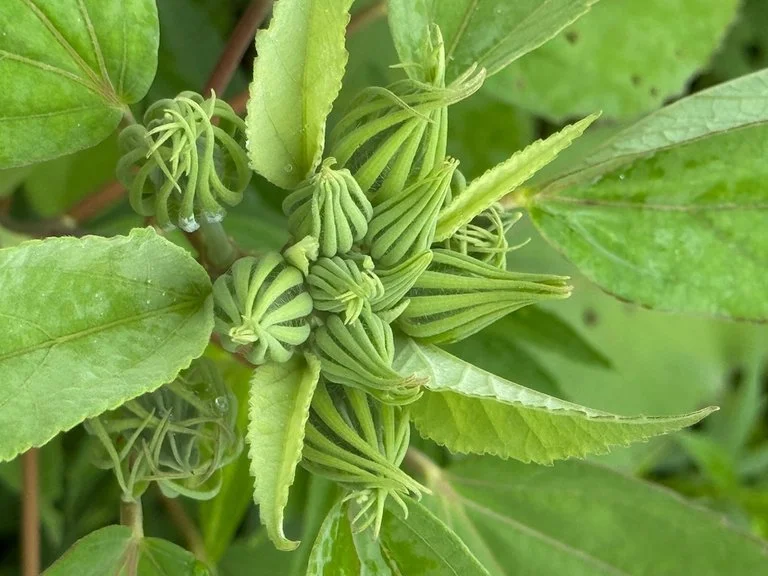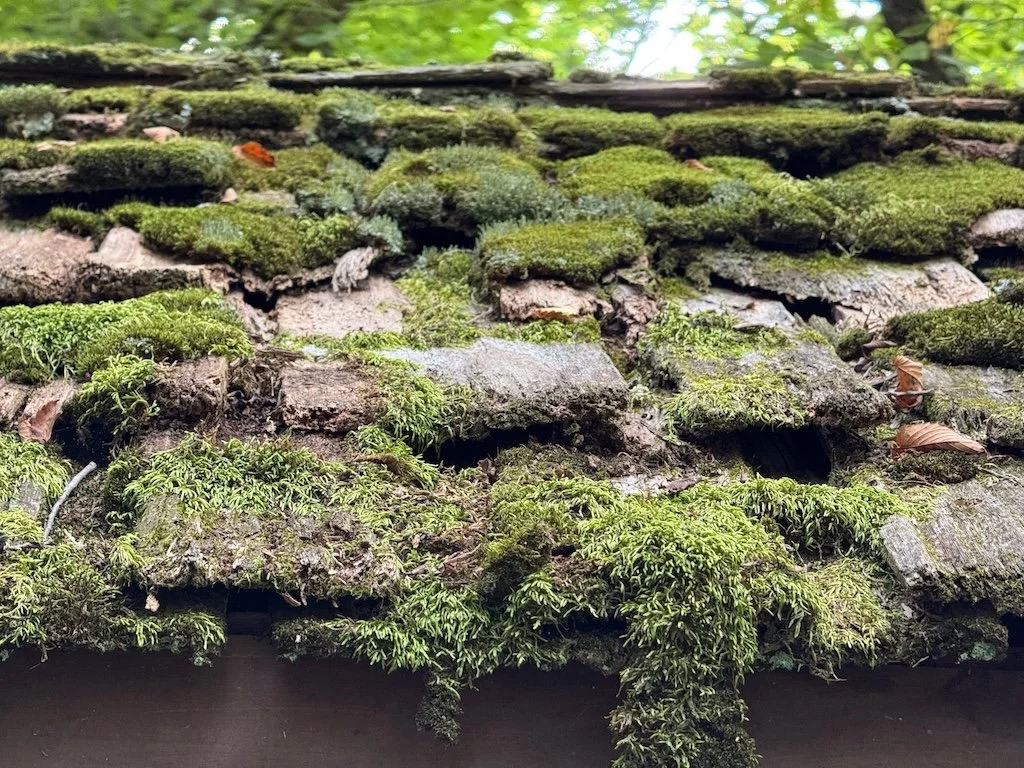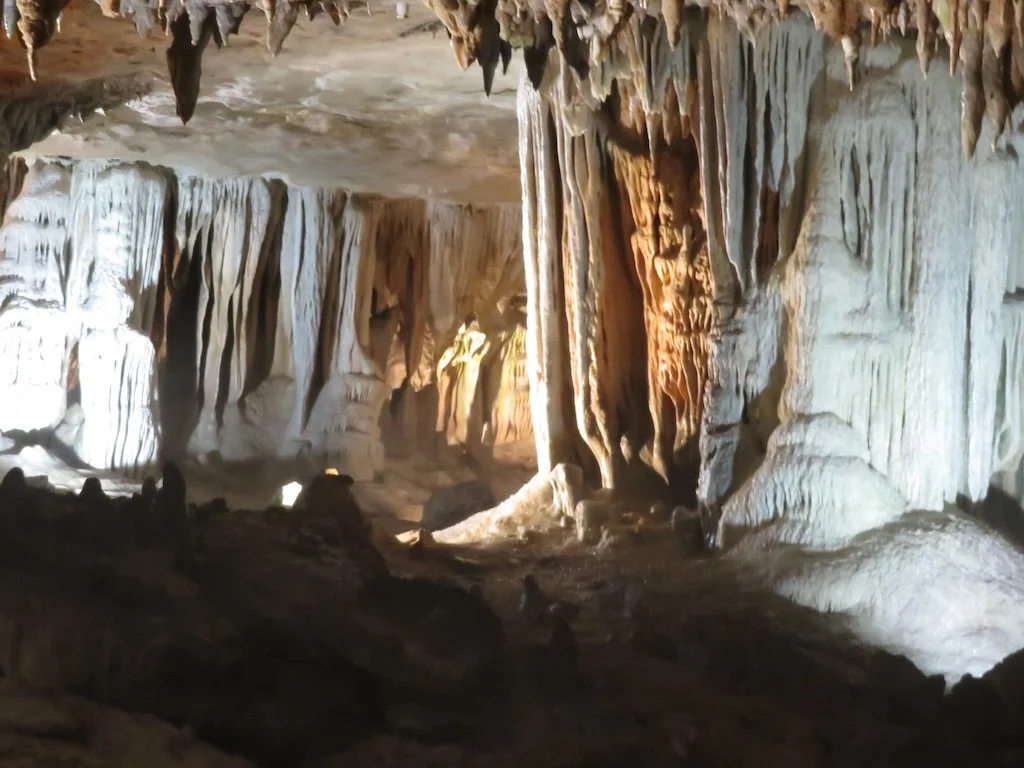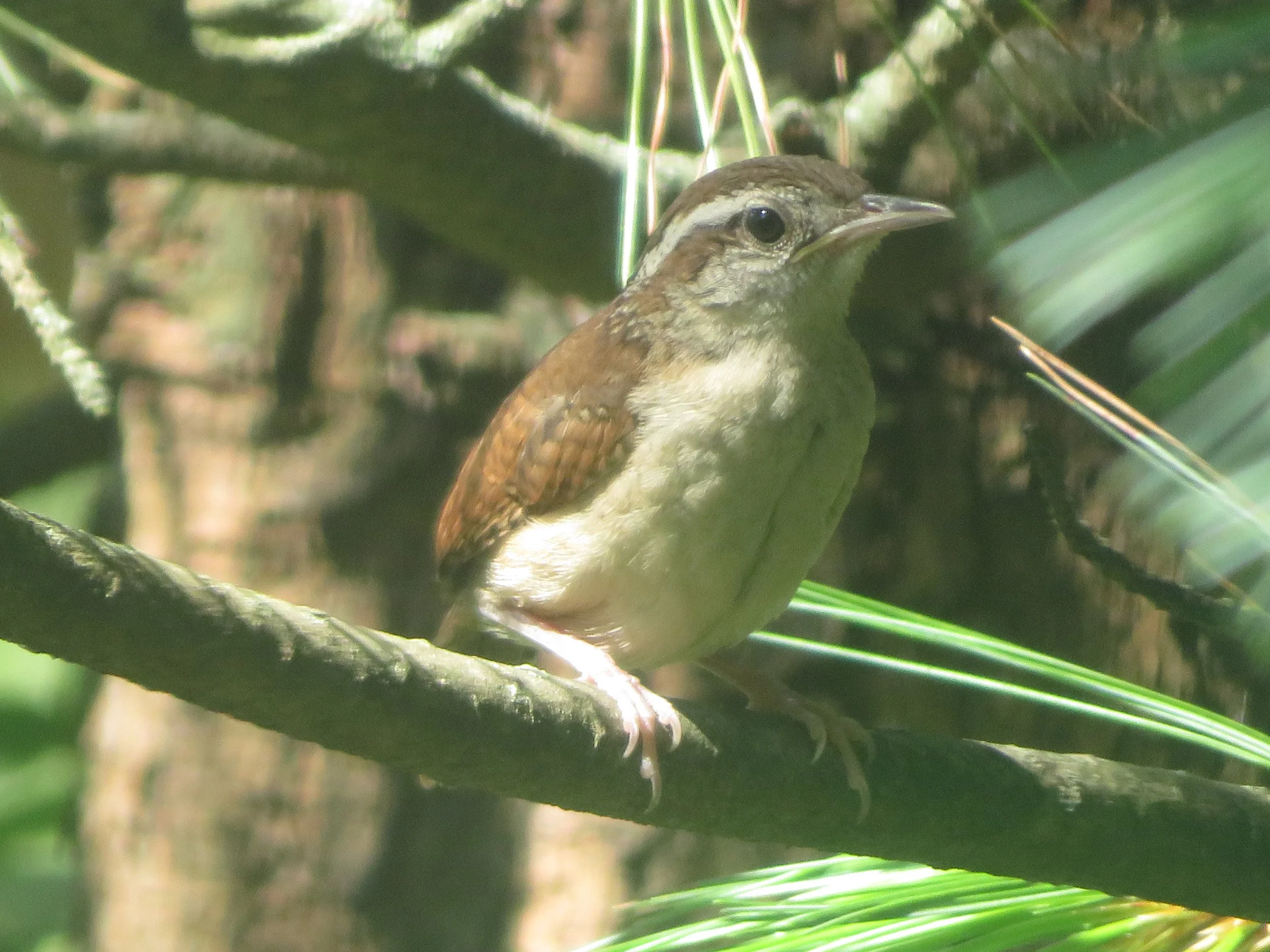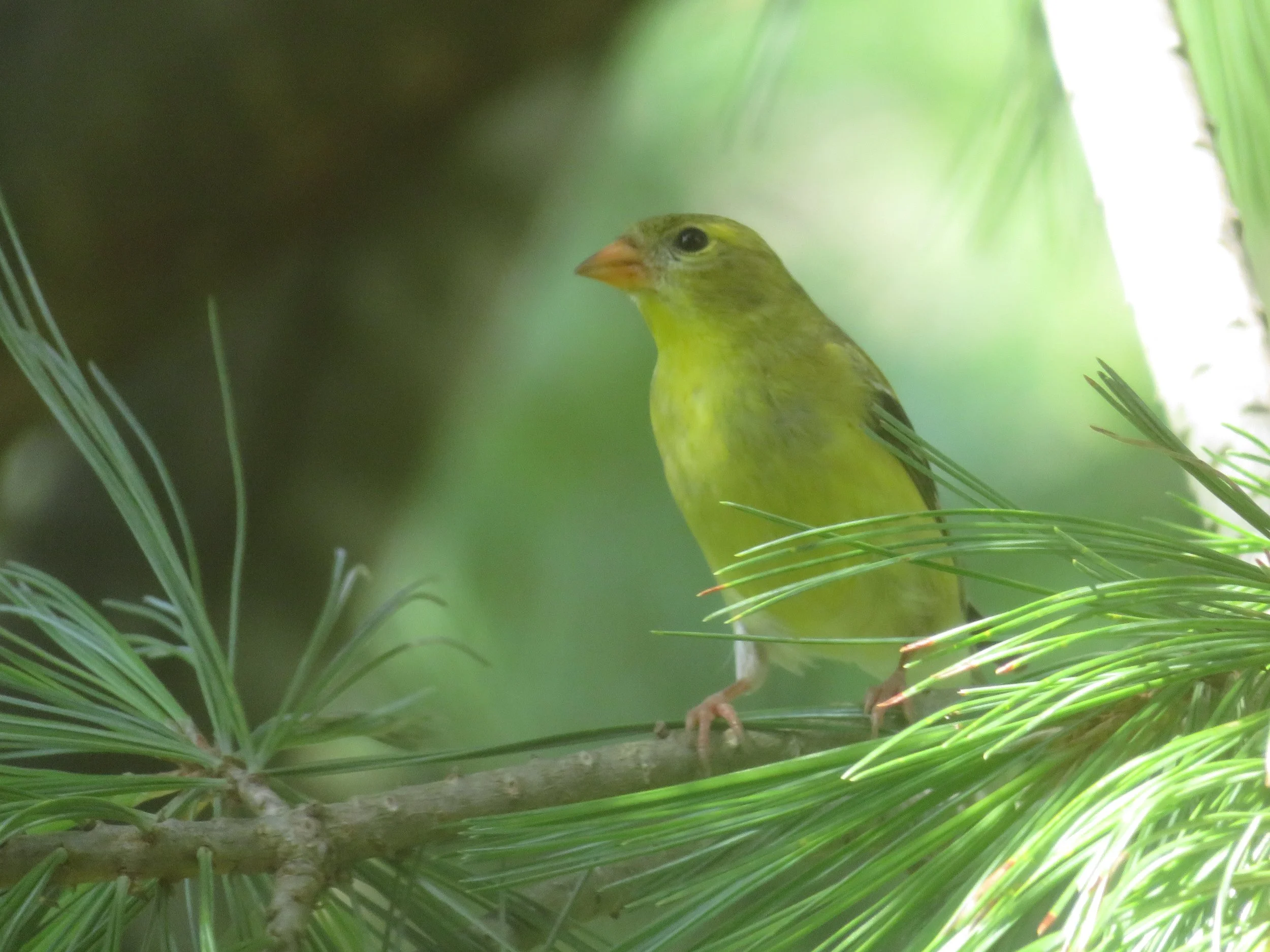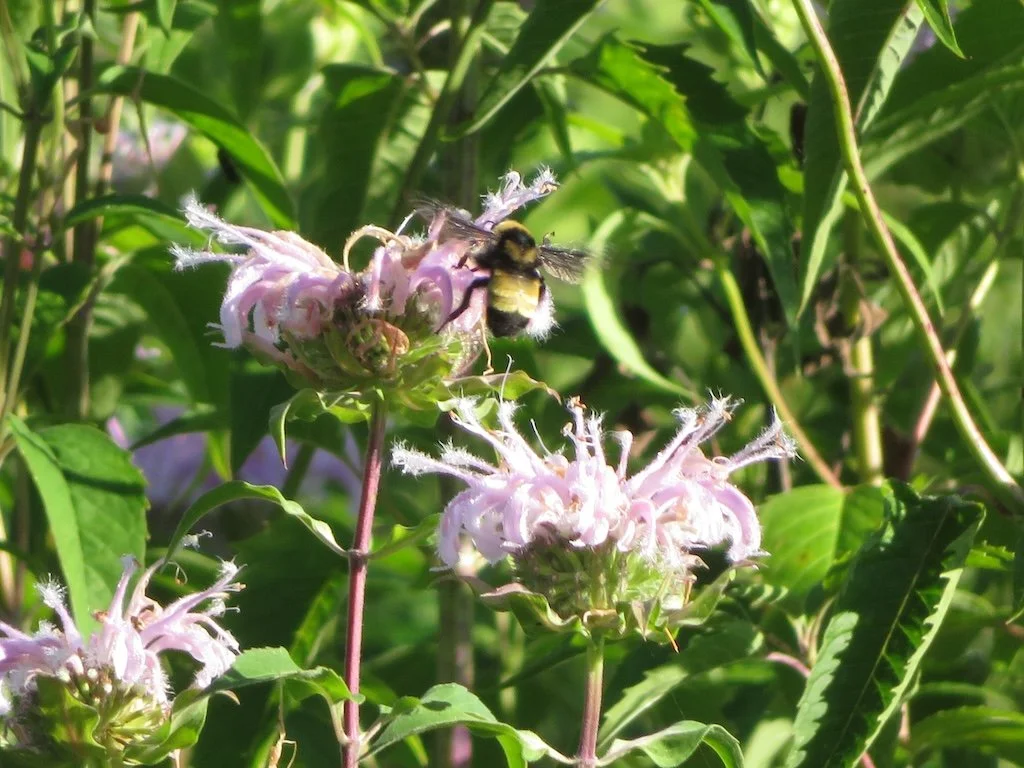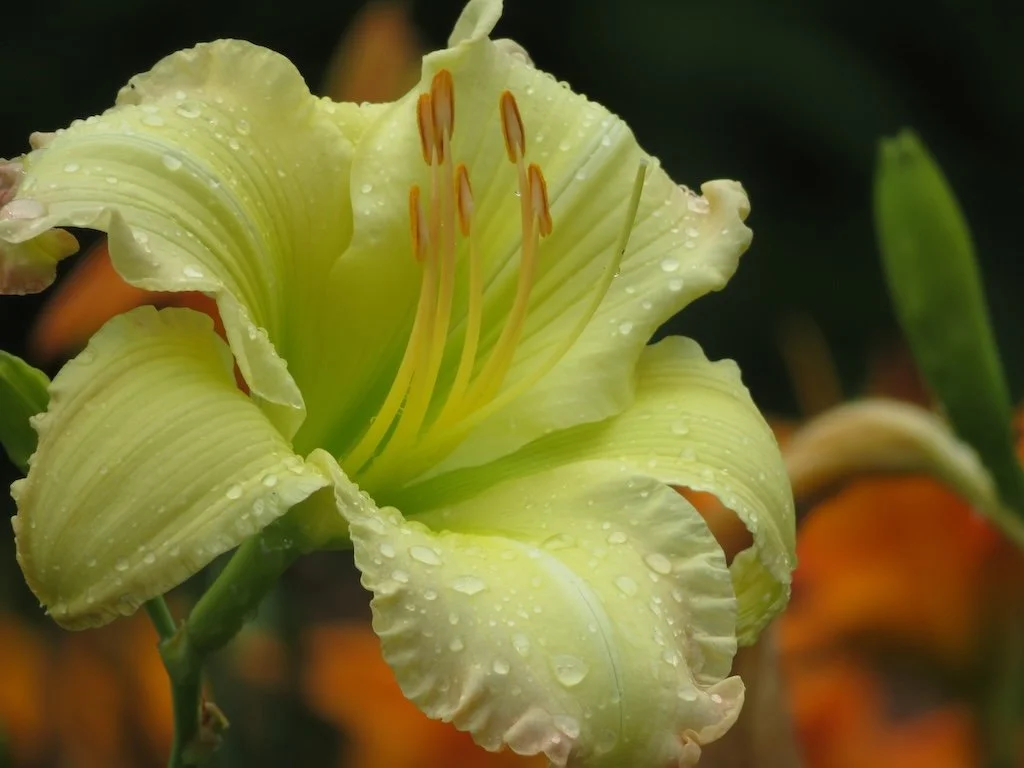Our Missouri Yard in August 2025
/July was very dry here, but our sprinkler system has kept up. Our shade garden looks lush with violets and a few hostas and lambs ear going to seed. The dried remains of alliums and some grass seed heads offer some highlights in the sea of violets.
The American Spikenard is blooming with violets under it a little further up the hill – and where I can see it from my office window.
Even further up the hill with violets around it, is the spicebush I planted last fall. I have been checking it for eggs or caterpillars --- and it finally has caterpillars. I counted 4 – all Spicebush Swallowtail caterpillars. I am leaving them alone right now but will go out and check on them. They are easy to spot even when they are small because they pull the leaf around themselves (like a leaf taco) when they resting.
One morning last week when I was out weed eating, I noticed that one of my mother’s naked lady lily bulbs that I planted in my yard in January 2023 has survived! The pokeweed shades it from the heat. There was a second plant that was mostly still buds. I was happy to see it --- glad it was there to spark memories of Mom. I took some macro images of the flowers. They start out a darker pink then fade as they mature.
The pokeweed seems to have more evidence that insects are eating its foliage…but has plenty of energy to make seeds. None of reached maturity yet (i.e. no purple fruits). I am going to let the ones in the bed with the lilies make seeds and hope the birds will enjoy the this fall/winter.
There are birds around: a female hummingbird that comes to my feeder frequently and sometimes flies to the nearby pine or visits the plants in the shade garden, a family of finches,
A young wren,
And a juvenile robin in the pine tree (the third brood for the summer). I am glad that the shade garden seems to be attractive to so many birds.
In the front yard, the crape myrtles are doing better than I expected. They tend to die back in winter but this year they seem to be more robust.
The Virginia creeper is a thick ground cover in the front bed around two of the crape myrtles. I periodically pull it off the bricks although the way it adheres is not damaging like English Ivy can be.
Our yard is looking good in August…and I am looking forward to the work to do the landscaping this fall in the front of the house.

